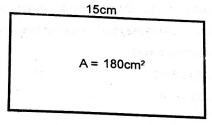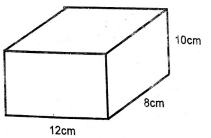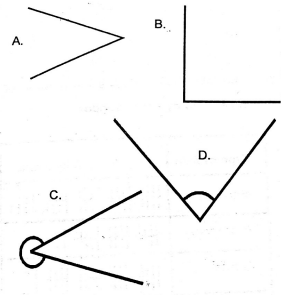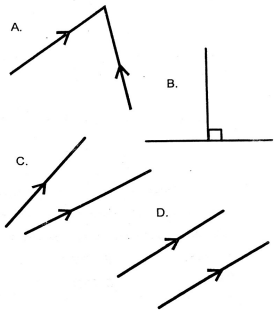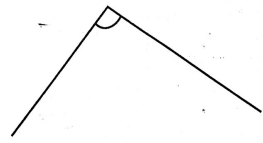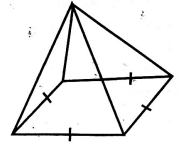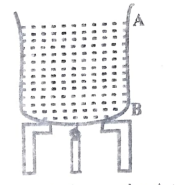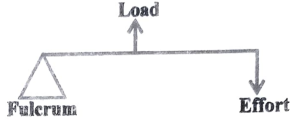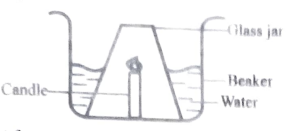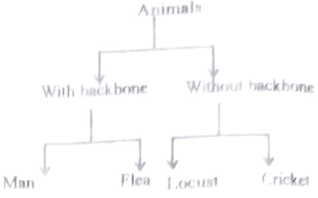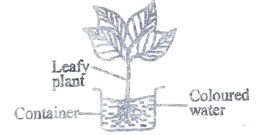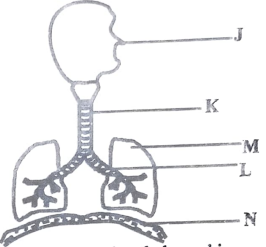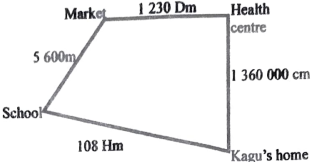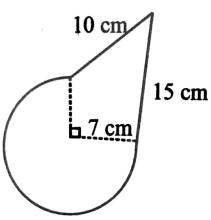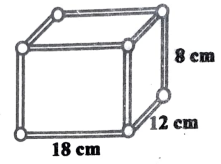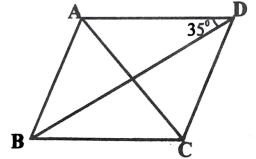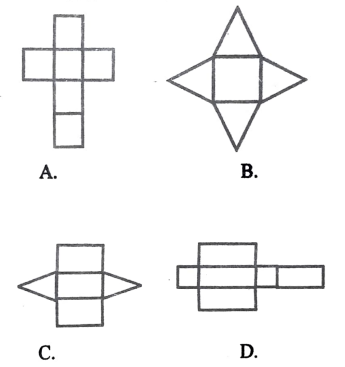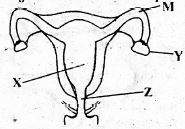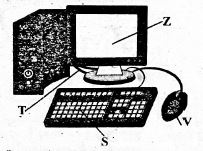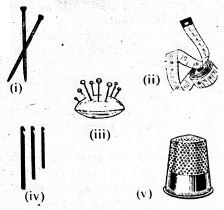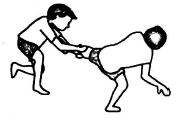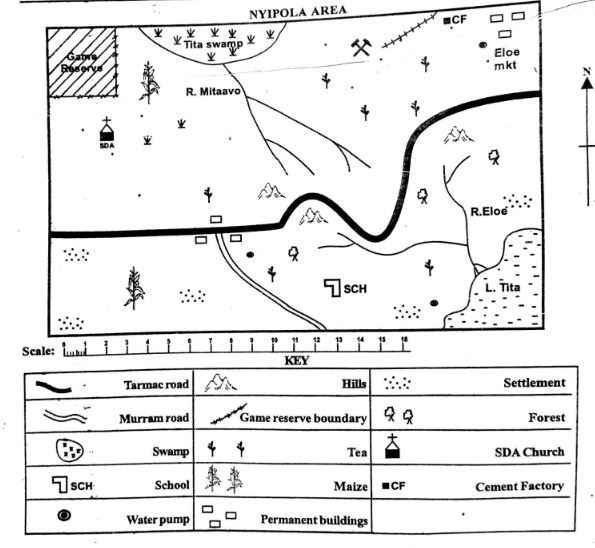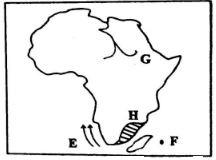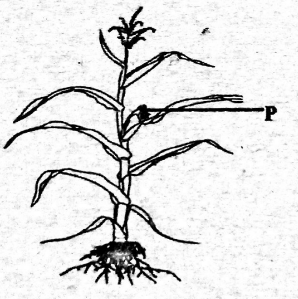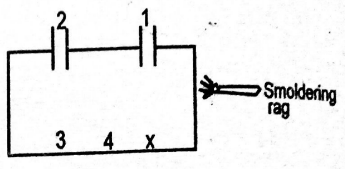Displaying items by tag: set 2
Mathematics Questions and Answers - Grade 6 Opener Exams Term 1 2023 Set 2
QUESTIONS
- The population of a certain county is seven hundred and six thousand and eighty two. What is the number in symbols?
- 706 802
- 706 082
- 760 082
- 706 820
- A milk processing plant received 6085047 litres of milk. What is the place value of digit 8 in the number?
- Thousands
- Hundreds
- Ten thousand
- Hundred
- What is the total value of digit 5 in the number 7,508042?
- 5000
- 50000
- 5000000
- 500000
- The population of six towns is 453619, 453691, 435916, 453916, 453819 and 435619
Arrange the numbers from the smallest to the largest.- 453918, 4536891, 453619, 435916, 435691, 435619.
- 453916, 435916, 453891, 435691, 453619, 435619:
- 435619, 435 691, 435916, 453619, 453691,435916.
- 453619, 435619, 453691,435691, 453916, 435916.
- Juma had Sh.35449 in his bank account. How much money to the nearest thousands did Juma have?
- Sh.35400
- Sh.35500
- Sh. 35000
- Sh. 35450
- Which of the numbers below is divisible by... 2,5 and 10?
- 40856
- 627830
- 732485
- 340689
- Find the L.C.M of 18, 24 and 36
- 36
- 6
- 72
- 78
- There were 648 205 registered voters in a certain county. During a by-election 76102 people did not vote. How many people voted?
- 724307
- 672103
- 532103
- 572103
- What is the next number in the pattern below?
18, 20, 24, 32,_________________________- 40
- 42
- 44
- 48
- The area of the rectangular cardboard drawn below is 180cm2. Calculate its width.
- 150cm
- 24cm
- 75cm
- 12cm
- Work out:-
8. 2 − 3.675- 5.475
- 4.675
- 4.525
- 4.625
- Convert 4085 metres into kilometres
- 4km 850m
- 4km 85m
- 40km 85m
- 40km 850m
- What is the volume of the cuboid below?
- 960cm3
- 30cm3
- 96cm3
- 60cm3
- Work out:-
3/8 + ¼ = ___________________________- 4/12
- 4/8
- 5/8
- 1/8
- Work out:
L ML
8 450
x 6
- 48L 2700ml
- 48L 700ml
- 50L 700ml
- 50L 400ml
- A rally car took 525 seconds to complete a race. What was this time in minutes and seconds?
- 8 minutes 45 seconds
- 5 minutes 25 seconds
- 8 minutes 35 seconds
- 5 minutes 15 seconds
- Which of the following is a reflex angle?
- Solve for x in the equation: 3x − 6 = 12
- 18
- 3
- 2
- 6
- How many Sh.50 notes are there in Sh.1000 note?
- 10
- 200
- 100
- 20
- Which of the following lines are parallel?
- Maria bought 15kg 75g of rice. What was the mass of the rice bought in grams?
- 15075
- 15750
- 1575
- 15705
- What is the place value of digit 3 in the number:- 807.4035?
- Tenths
- Thousandths
- Hundredths
- Thousands
- Rehema bought ¾ kg of meat. She cooked ½ kg of the meat. How many kilograms remained?
- ¼ kg
- 5/4 kg
- 2/4 kg
- ½ kg
- Measure the angle drawn below.
- 75°
- 115°
- 105°
- 65°
- A lorry carried 745 cartons of textbooks. Each carton had 24 textbooks. How many textbooks did the lorry carry altogether?
- 17880
- 17860
- 769
- 2960
- What is 3672 divided by 12?
- 36
- 306
- 360
- 3006
- Name the solid drawn below.
- Triangular pyramid
- Cuboid
- Cube
- Square pyramid
- Work out:- 14 + 6 x 4 − 24 ÷ 4
- 14
- 3.5
- 74
- 32
- Find the greatest number that can divide 48 and 60?
- 240
- 12
- 120
- 6
- The table below shows the number of 3 fruits sold by a fruit vendor.
How many more avocadoes than pineapples were sold?Type of fruit Tally marks Mangoes llll llll llll llll llll Avocadoes llll llll llll ll Apples llll llll llll llll l Pineapples llll ll - 10
- 7
- 17
- 24
MARKING SCHEME
- B
- C
- D
- C
- C
- B
- C
- D
- D
- D
- C
- B
- A
- C
- C
- A
- C
- D
- D
- D
- A
- B
- A
- C
- A
- B
- D
- D
- B
- A
Science Questions and Answers - Class 8 Term 1 Opener 2023 Set 2
QUESTIONS
- Which of the plants below is a non- green plant?
- Moss.
- Puffball.
- Fern.
- Algae.
- Sharing the same drug with a person with similar symptoms is
- drug misuse.
- overdosing.
- expiry of drugs.
- underdose.
- In the acronym AIDS, letter S stands for syndrome, meaning
- symptoms and signs.
- acquiring.
- state of sickness.
- shortage.
- The following plants have the same root system except
- carrot.
- banana.
- peas.
- cabbage.
- Which pair of the following blood vessels forms the main blood vessels in the human circulatory system?
- Pulmonary artery and pulmonary vein.
- Pulmonary vein and venacava.
- Aorta and venacava.
- Pulmonary artery and aorta.
- Which one of the following is not a sign of an animal infected with parasites?
- Rough coat.
- Rise in body temperature.
- Chewing cud.
- Loss of appetite.
- The diagram below shows an apparatus.
Heat travels from point A to point B through the process known as- evaporation.
- convection.
- conduction.
- radiation.
- Digested food is absorbed into the blood stream in the
- colon.
- ileum.
- rectum.
- stomach.
- Which of the following animals is a secondary consumer?
- Rat.
- Zebra.
- Lion.
- Bacteria.
- The soil with the poorest drainage
- is used in construction.
- is good for farming.
- cracks when dry.
- has a medium capillarity.
- The following are ways of conserving water
- Mulching.
- Shading.
- Harvesting.
- Re-using.
Which pair consists of methods that conserve soil moisture?- i and ii
- ii and iv
- i and ii
- ii and iv
- Which one of the following is the best lubricant?
- Tar.
- Water.
- Engine oil.
- Petrol.
- Which one of the following does not take place when breathing in? The
- diaphragm moves downwards.
- ribs move upwards.
- diaphragm moves upwards.
- lungs become inflated.
- The diagram below shows a tooth.
The type of teeth infection shown illustrates- cavity.
- bleeding gums.
- dental caries.
- plague.
- Which one of the following statements on precautions during thunderstorms is incorrect? A person should
- wear shoes with thick rubber soles.
- walk in open fields carrying metallic objects.
- not to stand in a pool of water.
- not to shelter under a tall tree.
- The diagram below represents a simple machine in use.
The arrangement represents a- wheelbarrow and a crowbar.
- crowbar.
- crowbar and a claw hammer.
- wheelbarrow.
- Which one of the following is not an artificial source of heat?
- Candle.
- Sun.
- Electricity.
- Lamp.
- Dark or grey heavy mountainous clouds which appear low in the sky are
- cumulus
- stratus
- nimbus
- cirrus
- A group of class 7 pupils set up the experiment below.
After sometime, the candle goes off because- water in the plate rises up and extinguishes the candle.
- the candle burns using most of the oxygen in the glass and then goes out.
- the glass prevents the candle from burning immediately it is placed in it.
- the candle burns but the carbondioxide it produces extinguishes it.
- Which one of the following does not cause tooth decay?
- Eating biscuits.
- Eating sugary foods.
- Drinking water.
- Brushing teeth once in a while.
- Which one of the following is an egg laying mammal?
- Reptile
- Shark
- Eagle
- Platypus
- The rainguage has its parts made of metal in order to
- make it look attractive.
- make it easy to paint.
- withstand harsh outdoor weather conditions.
- expand and contract.
- Below is a chart showing a simple classification of animals
Which animal is wrongly classified?- Man
- Flea
- Locust
- Cricket
- A HIV victim appeared to loose much weight within a short time and have a persistent cough. The person was likely to be in
- window stage.
- incubation stage.
- symptomatic stage.
- full blown stage.
- Gabions help to conserve soil in the environment by controlling
- sheet erosion.
- splash erosion.
- gulley erosion.
- rill erosion.
- Which one of the following is not a rotational grazing method?
- Strip grazing.
- Paddocking.
- Herding.
- Tethering.
- Which of the following parts of a flower does not wither after fertilization?
- Petals.
- Anthers.
- Sepals.
- Ovary.
- Which of the following parts of a seed develops into a shoot after fertilization?
- Radicle.
- Cotyledon.
- Plumule.
- Testa.
- When buying animal feeds, salt licks and bone meal help in supplying the animal diet with
- vitamins.
- fats and oils.
- minerals.
- proteins.
- Which one of the following is not part of the alimentary canal?
- Mouth.
- Liver.
- Anus.
- Rectum.
- Grade 6 pupils did an experiment as shown below.
The pupils were investigating- absorption in plants.
- photosynthesis in plants.
- transportation of water and mineral salts in plants.
- transportation in plants.
- The correct unit for measuring rainfall is
- the rainguage.
- millilitres.
- millimetres.
- newtons.
- Which one of the following is not a form of special sound? A
- Screaming
- Ringing a bell
- Hooting
- Singing
- The diagram below shows the human breathing system.
Air is moistened and cleaned in- J and K
- K and L
- L and M
- M and N
- The word EXAM is written on a T- shirt. Which of the following shows how the word would appear if the wearer stands infront of a mirror?
- EXAM
- EX∀M
- MAX∃
- The following are examples of food crops except
- beverages.
- legumes.
- cereals.
- fruits.
- Which one of the following weeds is dispersed by animals from one place to another?
- Sodom apple.
- Black jack.
- Oxalis.
- Wandering jew.
- The following are field pests except
- aphids.
- white ants
- cutworms.
- weaver birds.
- The blood vessels on the human circulatory system which have a pulse also
- act as links between veins and arteries.
- are located deep in the skin.
- are at the surface of the skin.
- carry blood with oxygen only.
- In a flower, fertilization takes place in the
- stigma.
- pollen tube.
- ovary.
- ovule.
- Which of the following lists does not contain any protective food?
- Watermelon, greengrams, yams.
- Green bananas, pawpaws, beef.
- Fish, kales, ugali.
- Potatoes, beef, milk.
- The bouncing off of light from a surface is termed as
- refraction.
- translucent.
- dispersion.
- reflection.
- The texture of soil type is determined by the
- size of its particles.
- mineral particles.
- living organisms.
- moisture in it.
- Which one of the following methods of preserving food does not dehydrate food?
- Drying
- Smoking
- Freezing
- Salting
- Which one of the following physical changes takes place in girls only?
- Increase in height and weight.
- Onset of menstruation.
- Onset of wet dreams.
- Appearance of beards.
- Which one of the following plants has a tap root system?
- Maize
- Onion
- Coconut
- Mango
- A child was suffering from a certain disease and showed the following signs:
- General body weakness.
- Face looking like that of an old person.
- Bones visible underneath the skin.
- Crying often.
The child was likely to be suffering from- goitre.
- kwashiorkor.
- marasmus.
- anaemia.
- Which one of the following components makes up the largest living component?
- Air
- Plants
- Animals
- Water
- A disease which causes a patient to experience itching at the bowels can be prevented by
- proper sanitation.
- draining stagnant water.
- cutting tall bushes.
- drinking boiled water.
- During an experiment to determine conduction in solids, pupils set up the following experiment.
The first pin to drop off was- P
- Q
- R
- none
MARKING SCHEME
- B
- A
- A
- B
- C
- C
- B
- B
- C
- C
- A
- C
- C
- A
- B
- C
- B
- C
- B
- C
- D
- C
- B
- C
- C
- C
- D
- B
- C
- B
- A
- C
- A
- A
- C
- A
- B
- B
- A
- C
- D
- D
- A
- C
- B
- D
- C
- B
- B
- D
Kiswahili Questions and Answers - Class 8 Term 1 Opener 2023 Set 2
MASWALI
Soma vifungu vifuatavyo. Fina nafasi mpaka 15. kwa kila nafasi umepewa majibu manne hapo. Chagua jibu lifaalo zaidi kati ya uliyopewa.
Katika baadhi ya ___1___ humu nchini, tatizo la uhaba wa maji ___2___ kuwaka kama ___3___. Wakazi wa maeneo hayo ___4___ changamoto kwani bei ya maji nayo imepanda maradufu. Wanaochuuza maji mitaani kwa ___5___ nao hawana ___6___ kwani ___7___ wakazi wa maeneo hayo na ___8___, wamepandisha bei ya bidhaa hiyo muhimu bila chembe ya hisia.
| A | B | C | D | |
| 1. | magatuzi | gatuzi | mataifa | mabara |
| 2. | yanaendelea | inaanza | linaendelea | unazidi |
| 3. | jua la mtikati | moto wa kifuu | hasira za mkizi | upepo wa tufani |
| 4. | wamekumbwa | wamekumbana | wamekumba | wamekumbwa na |
| 5. | mkokoteni | manowari | rukwama | helikopta |
| 6. | amani | mioyo | shukrani | imani |
| 7. | hawahurumii | hawawahurumii | hawawahurumi | hawahurumi |
| 8. | badala yake | baada yake | kabla yake | mahali pake |
Elimu ina ladha yake. Ingawa haihisiki kwa ulimi, utamu upo ___9___. Nasema hivi kwa sababu nimeyaona manufaa ya elimu. Nina uwezo wa kutambua maradhi kama ___10___ ambayo huambukizwa na ___11___ na mashairi ya aina nyingi kama vile ___12___ ambapo mshororo wa tano hukamilisha kila ___13___. Licha ya hayo, nimewafahamu wafanyakazi mbalimbali. ___14___ kuwa mfanyakazi anayeshughulikia mitambo ndiye
___15___
| A | B | C | D | |
| 9. | Ukiujua huu na huu huujui | Elimu ni taa, gizani huzagaa | Aisifuye mvua imemnyea | Msema pweke hakosi |
| 10. | malaria | malale | Ukimwi | Korona |
| 11. | chawa | kukohoa | ngono | mbung'o |
| 12. | takhmisa | tarbia | tathlitha | tathmina |
| 13. | mizani | ubeti | kina | ukwapi |
| 14. | Ninamjua | Namjua | Ninafahamu | Ninamfahamu |
| 15. | mwandishi | mhandisi | injini | sogora |
Kutoka swali la 16 hadi 30. jibu swali kulingana na maagizo.
- Chagua sentensi yenye tanakali ya sauti.
- Lo! Kumbe alikuwa shangazi yake!
- Wanafunzi walisoma kutwa kucha.
- Sarafu ilianguka mchangani tifu!
- Baba wa Juma ni mkali kama simba.
- Chagua kiwakilishi katika sentensi hii.
Kijana huyu ni mzuri kushinda yule.- yule
- mzuri
- huyu
- kushinda
- Tumia kirejeshi amba badala ya o-rejeshi.
Wanafunzi waliofuzu vizuri walizawidiwa.- Wanafunzi ambao waliofuzu vizuri walizawidiwa.
- Wanafunzi ambao walifuzu vizuri walizawidiwa.
- Wanafunzi ambaye walifuzu vizuri walizawidiwa.
- Wanafunzi ambayo walifuzu vizuri walizawidiwa.
- Kamilisha methali:
Mwana wa kuku hafunzwi- kuriaria
- kutembea
- kuchakura
- kupuruka
- Chagua majina yaliyo katika ngeli ya YA-YA pekee.
- Maumbo, maktaba, mate.
- Makawa, matatu, maji.
- Maradhi, maskanini, makavazi.
- Mafuta, mazingira, mauti.
- Ni neno gani halijaambatanishwa ipasavyo na jibu lake?
- Buriani - inshallah
- Makiwa - tunayo
- Alamsiki - binuru
- Sabalkheri - aheri
- Chagua sentensi iliyotumia o-rejeshi tamati kwa usahihi.
- Wageni wanaokuja ni wetu.
- Wanafunzi watakaotutumbuiza waje hapa mbele.
- Achanikaye kwenye mpini hafi njaa.
- Waliotuzwa wawape nafasi wengine watuzwe.
- Chagua sentensi sahihi kutokana na maneno haya:
Kitabu, cha, nipe, vitate, hiki- Nipe vitate cha hiki kitabu.
- Kitabu hiki cha vitate nipe
- Nipe hiki kitabu cha vitate.
- Nipe kitabu hiki cha vitate.
- Makia ya mabuzi haya ni mafupi katika wastani ni
- mkia wa mbuzi huyu ni mfupi.
- mikia ya mbuzi hawa ni mifupi.
- mikia ya mbuzi hao ni wafupi.
- mkia wa mbuzi huyo ni mfupi.
- Ni ipi ala ya muziki kati ya maneno yafuatayo?
- Parapanda
- Manati
- Manowari
- Nyambizi
- Kanusha:
Ningeenda ningempata akipepeta pojo kwenye ungo.- Singeenda singempata akipepeta pojo kwenye ungo.
- Nisingeenda singempata akipepeta pojo kwenye ungo.
- Nisingeenda nisingempata akipepeta pojo kwenye ungo.
- Nisingeenda nisingepata akipepeta pojo kwenye ungo.
- Tegua kitendawili.
Wanashindana wakifuatana.- Kufuli
- Samaki
- Mtu na kivuli
- Magurudumu
- Chagua jibu linaloonyesha sifa iliyoundwa kutokana na nomino.
- Saka - msasi
- Ushujaa - shujaa
- Cheza - mchezo
- Lipa - malipo
- Chagua neno lenye sauti changamano.
- Mtoto
- Watoto
- Mwavuli
- Wayo
- Upi ni usemi halisi wa sentensi ifuatayo?
Maono alisema kuwa alikuwa akiwachukia waliowaajiri watoto.- Maono alisema, "ninawachukia wanaowaajiri watoto.
- Maono alisema, "Ninawachukia wanaowaajiri watoto."
- Maono alisema, mimi siwapendi wanaowaajiri watoto.
- Maono alisema anawachukia wanaowaajiri watoto.
Soma kifungu kifuatacho kisha ujibu maswali 31 hadi 40.
Ajali za barabarani nchini zimeongezeka maradufu. Swali ni je, nani aelekezewe kidole cha lawama? Ni serikali, ni madereva au ni sisi wasafiri? Hiki kimebaki kitendawili kisichoweza kuteguliwa. Kila siku utasikia kutoka kwenye vyombo vya habari watu walioaga dunia kutokana na ajali. Hili ni jambo la kuatua moyo hasa kwa wale wanaofiwa na wapenzi wao katika ajali.
Mojawapo ya kiini cha ajali barabarani kwetu ni barabara mbovu. Barabara zilizoharibika huchangia pakubwa katika kusababisha ajali. Mashimo yaliyojaa barabarani hufanya magari kuyumbayumba na kisha kupoteza mwelekeo. Mwishowe magari hugongana dafrau na hivyo kusababisha vifo vya watu wasiokuwa na hatia. Serikali yetu ina jukumu kubwa katika kukarabati barabara. Wawape kandarasi watu walio na ujuzi
katika ujenzi wa barabara.
Vilevile, magari yanayobeba abiria kupita kiasi husababisha ajali. Dereva na kondakta wake huwasomba abiria ukadhani ni mashehena ya mizigo. Lengo la haya yote ni ulafi wa pesa. Lawama hapa zinafaa kuelekezwa kwa madereva, makondakta na abiria. Ni sharti wenye magari wajali masilahi ya wasafiri, nao wasafiri ningewashauri kutoabiri magari yaliyojaa abiria.
Isitoshe, magari mabovu katika barabara zetu pia ni chanzo cha ajali. Si ajabu kuwaona madereva wakiyaendesha makatara barabarani. Magari hayo huharibikia mahali popote na wakati wowote. Waendeshaji hawa hujipa moyo na kujitetea kwa methali isemayo ukuukuu wa kamba si upya wa ukambaa. Hatua thabiti za kisheria zinafaa kuchukuliwa na serikali ili kuyaondoa magari ya aina hii. Tukumbuke kuwa kinga ni bora kuliko tiba. Aidha, tutahadhari kabla ya hatari.
Fauka ya hayo, madereva wasiohitimu huchangia katika kusababisha ajali. Wao huendesha magari bila kuhitimu. Labda waliwahonga wanaohusika na utoaji wa leseni. Hawajui ishara za barabarani. Kwa mfano, kivuko cha watoto na hata wanyama, barabara zenye matuta na pengine ishara ya kuonyesha kuruba. Wanaotoa leseni wanapaswa kuwajibika na kutoshiriki ufisadi.
Madereva waliotumia dawa za kulevya pia husababisha ajali. Uwezo wao wa kuona vyema huathirika kwa sababu ya vileo. Wao hawamakiniki wanapoendesha magari. Mihadarati pia huwafanya wengine kuendesha magari kwa kasi mithili ya duma. Wao husahau kuwa haraka haraka haina baraka.
Ni sharti sote tuungane mikono ili kukomesha ajali katika barabara zetu. Tukumbuke kuwa nia zikiwa moja, kilicho mbali huja. Sisi ndisi wenye nchi na kumaliza ajali kunatutegemea sisi.
- Katika aya ya kwanza, ni nani anastahili kulaumiwa kutokana na ajali?
- Madereva
- Abiria
- Hafahamiki
- Serikali
- Ni orodha ipi iliyo na vyombo vya habari pekee?
- Redio, televisheni, tishali.
- Gazeti, redio, televisheni.
- Majarida, kiyoyozi, redio.
- Runinga, uyoka, magazeti.
- Barabara zilizoharibika husababishaje ajali?
- Magari huendeshwa kwa kasi na baadaye kuyumba.
- Magari huharibika, kuyumbayumba na kugongana.
- Magari hupoteza njia na kugongana.
- Magari huyumbayumba na kuwagonga wapitanjia.
- Kwa nini madereva huwabeba abiria kupita kiasi?
- Mara nyingi wao huwa na haraka.
- Abiria hupenda kubanana kama ndizi.
- Wao huwa na tamaa ya pesa.
- Viti huwa vichache mno magarini.
- Ni nini maana ya methali ukuukuu wa kamba si upya wa ukambaa?
- Tusidharau vitu vya zamani kwa kutamani vipya.
- Vitu vya zamani huwa tofauti na vipya.
- Tusividunishe vitu vipya kwani vina faida nyingi.
- Vitu vya zamani huwa si vizuri kama vipya.
- Madereva wasiohitimu huwezaje kupata leseni?
- Huzinunua kutoka madukani.
- Hupewa na maafisa wa trafiki barabarani.
- Hutoa hongo.
- Hupewa na serikali.
- Kulingana na ufahamu, mihadarati husababisha haya yote ila
- shida za kutazama barabarani.
- madereva kuugua magonjwa yatokanayo na dawa za kulevya.
- madereva kukosa uangalifu wanapoendesha magari.
- magari kuendeshwa kwa kasi.
- Unafikiri ni njia ipi mwafaka ya serikali kuhakikisha kuwa magari yameendeshwa kwa mwendo wa kadiri?
- Kuwa na maafisa wa trafiki katika kila mji nchini.
- Kuandaa semina kuwahamasisha abiria.
- Magari kutiwa vidhibitimwendo.
- Kutoa adhabu kali kwa abiria wanaoabiri magari yaliyojaa abiria.
- Ni ushauri upi uliotolewa kwa wale wote wasababishao ajali?
- Kuwafahamisha askari wa trafiki kasoro yoyote ya madereva.
- Kutowahonga wanaotoa leseni.
- Kutoabiri magari yaliyojaa wanaposafiri.
- Kuchukua tahadhari wanaposafiri.
- Kichwa kinachofaa zaidi ufahamu huu ni kipi?
- Athari za ajali barabarani.
- Chanzo cha ajali barabarani.
- Njia za kuzuia ajali barabarani.
- Ufisadi katika sekta ya uchukuzi.
Soma kifungu kifuatacho kisha ujibu maswali 41 hadi 50.
Vumilia alikuwa mtoto wa kike. Alikuwa kifunguamimba katika familia ya mzee Juhudi. Baba wa Vumilia alikuwa maskini wa mali lakini tajiri wa moyo. Alifanya kazi za kijungujiko kuwakimu wanawe na mkewe ambaye walichukuana kama sahani na kawa. Wazee wa vumilia walikula yamini kufanya kila waliloweza ili kumrithisha mwana wao ufunguo wa maisha.
Vumilia alipohitimu darasa la nane, wazazi wake walichochea ari yake ya kufuzu maishani kwa kutumia mifano halisi ambayo Vumilia aliielewa. Wazee hao walimkumbusha binti yao kuwa bidii, utiifu, uvumilivu pamoja na heshima na uadilifu vilikuwa siri kubwa ya fanaka. Naam! Ilibainika kuwa samaki hukunjwa angali mbichi.
Binti wa watu alipopasuliwa mbarika, alikuwa kama mbwa aliyeonyeshwa ufuko, akakataa abadan katan kufa maji. Aliongeza bidii maradufu katika masomo yake na kuwa kama anayetegemea kisomo kuishi. Waliosema kuwa bidii hulipa hawakukosea. Mtihani ulipofanywa na matokeo kutolewa, Vumilia aliwaacha wengi vinywa wazi kwa kuwa alikuwa amewashinda watahiniwa wote nchini.
Halikuwa la mjadala tena. Anayechovya asali hachovyi mara moja. Vumilia hakulegeza kamba wala kuangalia nyuma. Makini yake yalikwama masomoni. Licha ya kuwa kijana, alikataa kuwa bendera ya kufuata upepo. Alimakinikia ndoto yake ya kuwa mhasibu ili kuwaauni wazee wake kama njia ya kushukuru kwa yote waliyoyatenda. Wafadhili wake waliridhishwa na hatua yao ya kumfadhili Vumilia tangu shule ya msingi hadi chuo kikuu.
Hewaa! Hayawi hayawi huwa. Tunapozungumza sasa, Vumilia ni mhasibu mkuu katika benki kuu ya Tulizeni. Amewajengea wazee wake kasri na kuhakikisha kuwa wanapata kila wanalohitaji. Daima huwasomesha wadogo wake na kuwahimiza kufanya bidii za duduvule wakifahamu mno kuwa jasho la leo ndilo faraja ya kesho.
- Ni kweli kusema kuwa katika familia ya mzee Juhudi
- Vumilia alikuwa mtoto wa pekee.
- Vumilia alikuwa yatima aliyefadhiliwa.
- kulikuwa na watoto kadhaa.
- Vumilia hakuwa na wanuna wowote.
- Kifunguamimba ni sawa na
- mwanambee.
- ndugu mdogo.
- mtoto wa pekee
- mtoto wa mwisho.
- Wazazi wa Vumilia waliichochea ari yake
- alipokuwa katika shule ya msingi.
- baada ya kumaliza masomo ya sekondari.
- alipokuwa katika chuo kikuu.
- alipomaliza masomo ya msingi.
- Ni sifa gani ambayo wazazi wa Vumilia hawakumfunza kama siri ya fanaka?
- Bidii.
- Utiifu.
- Ujanja.
- Uadilifu.
- Katika kidokezi samaki hukunjwa angali mbichi, anayelinganishwa na samaki hapa ni
A. vumilia.
B. wazazi.
C. walimu.
D. wanuna wa Vumilia. - Kilichomwezesha Vumilia kupita vizuri katika mtihani wa darasa la nane ni
- utajiri wa wazazi wake.
- hali ya umaskini wao.
- ushauri wa wazazi wake.
- mtihani kuwa rahisi.
- Vumilia alikuwa tofauti na vijana wenzake kwa kuwa
- hakushawishika kufuata mkondo mbovu.
- aliamua kuwa mhasibu.
- alisoma hadi chuo kikuu.
- aliwafaa wazaziwe baadaye.
- Amewajengea wazee wake kasri ni
- nahau.
- tanakali ya sauti.
- istiara.
- tashbihi.
- Wafadhili wa Vumilia
- walijutia uamuzi wao.
- walimwonea fahari Vumilia.
- walimwonea wivu Vumilia.
- walisikitikia mafanikio ya Vumilia.
- Methali gani inayoweza kutumiwa kufupishia ujumbe wa ufahamu huu?
- Heri nusu shari kuliko shari kamili.
- Mali bila daftari hupotea bila habari.
- Hasara humpata mwenye mabezo.
- Mvumilivu hula mbivu.
MARKING SCHEME
- A
- C
- B
- D
- C
- D
- B
- A
- C
- B
- D
- A
- B
- C
- B
- C
- A
- B
- C
- D
- A
- C
- D
- B
- A
- C
- D
- B
- C
- B
- C
- B
- C
- C
- A
- C
- B
- C
- D
- B
- C
- A
- D
- C
- A
- C
- A
- C
- B
- D
English Questions and Answers - Class 8 Term 1 Opener 2023 Set 2
QUESTIONS
Read the passage below it contains blank spaces numbered 1-15. For each blank space, choose the BEST alternative from the given four.
Juma was well known not only for his skill in metalwork ___1___ for the way he ___2___ with people. He ___3___ politely to his customers and he ___4___overcharged them. He was honest ___5___ for this people liked him. His grandmother was friendly. She talked to customers kindly and ___7___ the women how their children were ___8___.Two or three times ___9___ month Juma went to town and ___10___ bags full of old cans On ___11___ days, his grandmother was left to ___12___ the workshop
"Hallo, Grandmother. Are you the shopkeeper this afternoon ____13___ I asked her one day ___14___ I visited the workshop. "Yes, I am," she ___15___.
| A | B | C | D | |
| 1. | but also | even | too | too |
| 2. | talked | answered | blended | dealt |
| 3. | discussed | stated | talked | argued |
| 4. | never | rarely | hardly | usually |
| 5. | but | or | and | even |
| 6. | as well as | also | yet | too |
| 7. | inquired | asked | compelled | told |
| 8. | getting well | getting on | getting about | getting across |
| 9. | every | half | whole | each and every |
| 10. | brought in | brought back | brought forth | brought down |
| 11. | this | that | these | such |
| 12. | look after | look at | look ahead | look back |
| 13. | ." | ?" | ," | "? |
| 14. | once | while | when | during |
| 15. | said | talked | answered | replied |
For question 16-18, choose the alternative that best completes the sentence given.
- The secret was between you and __________
- he
- me
- they
- I
- The new fabric ___________________ when it was washed yesterday.
- shrunk
- shrink
- shrinked
- shranks
- It was not until four o'clock __________________
- when the choir returned
- that the choir returned
- that the choir returned back
- when the choir returned back
For question 19-21, choose the alternative that means the same as the underlined word(s)
- The president spoke in very few words.
- harshly
- wildly
- clearly
- briefly
- We could hear the sound of the horse distinctly from afar.
- neighing
- chattering
- braying
- whirring
- Had the children worked harder, they would have excelled.
- The children didn't work hard yet they excelled.
- The children didn't work hard enough to excel.
- The children worked hard and excelled.
- The children will excel as long as they work hard.
For question 22 and 23. choose the alternative that means the opposite of the underlined.
- The maximum number of players allowed in the game is twenty.
- least
- greatest
- minimum
- largest
- The polite learner was awarded by the head teacher at the end of the year.
- humble
- harsh
- courteous
- rude
For question 24 and 25, choose the one that least fits in the group.
-
- stop
- run
- jog
- occur
-
- pilot
- captain
- teacher
- occupation
Read the passage below and then answer question 26-38.
The village we all loved so well consisted of perhaps twenty mud houses grouped in compounds on either side of the road. Each compound contained four or five houses arranged in a hollow square. One of these compounds, the biggest by far, was the Chief's. His was the only house with corrugated iron roofing. Not even his wives' houses in the same compound had this luxury.
A little stream ran under the main road at one end of the village near the school. The bridge over this stream was wide enough to take one car or lorry at a time. When we were having our twice-daily bath in the cool, clean water below, it was frightening to see how a lorry crossing the bridge leaned over, seeming always in danger of falling and crushing us.
I suppose I must at an early age have given some evidence of possessing better-than- average intelligence, for my family sent me to school - the only one of my brothers and sisters thus favoured. Perhaps though, it was only that when we were children squatted on the bare earth in front of the house, taking it in turn to invent stories, mine always seemed to be the lengthiest and most involved, as well as the most popular. But then my elder brother had learned to give the customers who came to my mother's shop their correct change at an earlier age than 1, and one of my younger brothers could beat the drum better than I could. I see now that, slight as were my father's contacts with the outside world, he had learnt that a person's success depended on his ability to express himself effectively in the big city on the coast (which to the best of my knowledge, he only visited once), as well as in the great unknown world beyond.
I do not remember ever hearing my father and mother discuss the question of my being sent to school. One morning, without any warning, my father said to me," Kisimi, put on your best gown, wash your feet, and follow me." I must have been about ten years old at the time, for I was just tall enough to reach things on our verandah parapet from the ground outside. My father had put on his best khaki trousers and a blue and white striped robe, and walked ahead of me down the two miles road between our hut and the small school run by the American missionaries on the other side of the village.
We turned off the road up a neat gravelled path lined with short bushes of crimson double hibiscus set at regular intervals. To one side of the path was a dwarf-sized football field, and mango and avocado pear trees stood on the other side, the former with their blossoms, so much like Christmas-tree decorations, swaying softly in the breeze. My feelings are we stepped over the dusty threshold into the cool interior of the one-roomed school were compounded of curiosity and pride, but mainly of the latter.
The American lady who rose from her table in a corner of the room to greet us as we entered was I thought, radiantly beautiful. She smiled as if she already knew and was very fond of us; her skin was white and red, and looked so soft and smooth that I longed to touch it. But when she spoke her voice sounded unmusical and unnatural, and even the little boy who was summoned to interpret for her seemed to have difficulty in understanding what she was saying. I marvel now at the speed with which we all learned to understand and speak the strange language she spoke.
- In the village where the writer fived
- houses were made of bricks and mortar
- houses were arranged in two parallel rows
- only the houses of the Chief's wives had corrugated iron roofing
- the Chief's house was situated in the biggest compound
- Which of the following statements is correct?
- The water of the stream was seldom clean.
- It was the writer's daily habit to go twice for a bath in the stream.
- The bridge over the stream was too narrow for a lorry to pass.
- In the village there were no fewer than twenty compounds.
- The writer says that
- he does not know the reason why he was sent to school.
- his stories were popular because they were imaginative.
- all his younger brothers except one could beat the drum better than he did.
- his elder brother learnt to give the customers the correct change at a younger age than he did.
- It is clear from the passage that the writer's father
- had no contact whatsoever with the outside world.
- was well aware of the fact that a man's ability to express himself effectively stood him in good stead in a big coastal city.
- thought that his son had more-than- average intelligence.
- sent his son to school because he could do no useful job at home.
- According to the passage, which statement is true?
- Kisimi heard his parents discuss that they would send him to school.
- Kisimi and his father were well dressed on the day of their visit to the American missionaries' school.
- Kisimi was exactly ten years old when he joined the school.
- Kisimi went ahead of his father all the way from their house to the school.
- On the occasion of his first visit to the village school, the writer
- requested his father to accompany him to the school.
- had mixed feelings of pride and curiosity.
- was very much impressed by the American lady teacher who said that she knew them.
- did not fail to notice the musical quality about the American lady's voice.
- When Kisimi and his father visited the school
- The American lady made them feel that they were welcome visitors
- They had little difficulty in understanding what she was saying
- A little boy translated fairly well for them in their language what she was saying
- Kisimi learnt to understand and speak the American lady's strange language which she spoke on the very first visit he made to the school
- The description of the writer's visit to the school as given in the last two paragraphs is
- Vague
- Vivid
- Dull
- Unnecessary
- What does the expression 'this luxury'. printed in bold in the first paragraph, refer to?
- The biggest compound
- A bath in the cool, clean water
- Corrugated iron roofing
- A house made of bricks and mortar
- The word 'evidence' printed in bold in the third paragraph can be best replaced by
- Proof
- Confidence
- Certainty
- Assurance
- How old was the writer when he was taken to school?
- Ten years old
- Approximately ten years
- Almost ten years old
- Precisely ten years old.
- What surprising thing has the writer mentioned in the last paragraph?
- They learnt the foreign language very fast.
- The white lady forced them to enrol in the school.
- He hated school right from the first day.
- He enjoyed learning immediately after enrolment.
- The best title for the passage above would be
- My first day in school.
- My childhood years.
- The village we lived in.
- Why I was sent to school.
Read the passage below and then answer question 39-50
The term child labour is not new in this country. It is a practice that has existed from time immemorial. Children are forced to seek employment for various reasons. Some may have lost both parents at a very tender age. Others come from very poor families hence are forced to stop schooling to seek employment to sustain the remaining members of the family.
Due to poor working conditions, these children suffer untold pain. Many's the time when these children work in the rain, scorching sun and very dusty conditions. These children are also exposed to very harmful and deadly chemicals for they work without protective clothing such as gloves, mouth and nose masks, gumboots, helmets or overalis. They touch these with their bare hands and step on them with bare feet. Any medication for these children becomes a nightmare.
Most of these children are mistreated by their employers. They are not allowed to complain whatsoever; they are beaten thoroughly whenever they complain. During these beatings, they sustain serious injuries, which become rather septic and rarely get the necessary treatment. Further still, the mistreatment and injuries the children sustain leave them so traumatized and not trusting any adults. They find adults rather inhuman.
Employing children denies them the basic right to education and opportunities to go to school not forgetting that education at primary and secondary levels in Kenya is free. Child labour encourages delinquency, truancy and school dropouts among many children of school going age. Despite the hardship encountered, children prefer to give up school and fend for themselves through the minimal wages received in child labour.
Further investigations on child labour reveal that some parents give out their eldest children to fend for the family and themselves. The case in point is where children are employed as house helps. In most cases, the child employed is of the same age as the children of the employer. The employer's children go to school but the juvenile house help has to wake up at the wee hours of the morning, prepare breakfast, polish the children's shoes and see them off to school. Sometimes the child is subjected to beatings and verbal abuse for work not well done. At times the child will go without food for a mistake made by someone else.
Worse still, child labour encourages drug and alcohol abuse. Most children take to drug abuse and alcoholism to escape their woeful lives. Many of these children develop immoral behaviour due to the harsh conditions they are subjected and exposed to at such a tender age. We all agree that child labour is an evil act that demoralizes children. We should all stand our ground and say no to child labour.
- According to the first paragraph, child labour
- has been accepted in the society as a long-time practice.
- has been practiced for a long time in Kenya.
- has existed among Kenyans for a short period.
- is a new practice being tried out.
- Which one of the following is not a possible reason why children seek employment?
- Becoming orphans at a young age.
- Being born and raised in abject poverty.
- Peer pressure.
- There are various reasons for this.
- ....at a very tender age... has been used to mean
- young and unexposed
- coming from the village
- young and foolish
- old enough to care
- What does the writer mean by untold pain?
- Too much pain that is not known by many.
- Pain that cannot be told.
- Pain that has never been heard of.
- Pain that can be borne.
- When you work without protection wear you
- inhale harmful chemicals.
- take deadly and harmful things.
- do not get exposure to anything.
- are likely to suffer from deadly disorders.
- What eventually happens to those children who work without protective gear?
- They are treated although when it is too late.
- They contract diseases but do not get treatment.
- They withstand all that comes their way.
- They are too strong to be shaken.
- According to the passage, adults
- are considered inhuman because of the way they treat the underage and employed children.
- inhuman in the eyes of all the children.
- traumatize young children in their surrounding.
- expose employed children to deadly things.
- How does the society violate the children's rights?
- They do not consider the fact that education is free in Kenya.
- They expose them to chemicals.
- They beat up children.
- They deny them the right to education by employing them.
- Why would a parent give out their children to work? In order to
- fend for their families.
- increase to the family income.
- avoid paying school fees.
- engage everyone in the family.
- The words 'at the wee hours of the morning' can be replaced by
- late at night
- very late in the day
- mid mornin
- very early in the morning
- Why do employed children take lo drugs?
- In order to escape from the wretched life they lead.
- They are poor and condemned to die so.
- Harsh punishment awaits them later in the day.
- It is their only consolation.
- The passage you have read is about
- Child abuse.
- The modern society today.
- Child Labour.
- Inconsiderate parents.
Mathematics Questions and Answers - Class 8 Term 1 Opener Exams 2023 Set 2
QUESTIONS
- What is ninety eight million, ninety eight thousand and ninety eight in numerals?
- 98 098 908
- 98 908 908
- 98 908 098
- 98 098 098
- How many groups of thousands are there in the total value of digit 4 in the number 548 928 671?
- 40 000
- 4 000
- 400
- 400 000
- What is the next number in the pattern?
209, 168, 131, 100, 71, ________- 44
- 46
- 48
- 50
- What is 6/13, 9/14, 8/15, and 11/17 arranged in an ascending order?
- 9/14, 8/15, 6/13, 11/17
- 6/13, 8/15, 9/14, 11/17
- 11/17, 9/14, 8/15, 6/13,
- 8/15, 9/14, 11/17, 6/13
- What is 28. 2586 rounded off to the nearest hundredths?
- 28. 25
- 28. 259
- 28.6
- 28.26
- What is the place value of digit 6 in the number 962 534?
- Tens of thousands
- Hundreds of thousands.
- Thousands.
- Millions.
- What is the value of 8¼ + 21/3 of 32/9 ÷ 11/6 ?
- 911/36
- 1819/36
- 1425/36
- 2023/36
- What is the value of:
0.87 + 51.3 - 0.09 + 0.2?- 52.82
- 51.26
- 51.88
- 52.28
- Which of the following numbers is divisible by 11?
- 2 158 496
- 2 614 150
- 2 588 964
- 2 469 830
- The area of a square plot of land is 2 809m2. Find the length of one side.
- 53m
- 57m
- 47m
- 43m
- The population of a country is 46 005 818. If 15 589 746 are women and 21 934 834 are children, how many men are in the country?
- 8 841 328
- 9 281 328
- 8 481 238
- 9 821 238
- A bus travelled from Mombasa to Nairobi, a distance of 468km. Later on, the bus went another 281km to Nakuru and then further 96km to Kericho. What distance in kilometres was covered by the bus altogether?
- 854km
- 845km
- 749km
- 794km
- A lorry carries 378 bags of rice in one trip. Each bag of rice is 25kg. If the lorry makes 18 trips, how many tonnes does the lorry transport?
- 1710t
- 171.0t
- 1701t
- 170.1t
- In a coffee plantation, 28 080 coffee seedlings were planted in 156 rows. How many coffee seedlings were planted in each row?
- 180
- 140
- 160
- 120
- Three bells ring at intervals of 24 minutes, 30 minutes and 40 minutes. The bell rang together at 1145hrs. At what time in am/pm will they ring together again?
- 11.45 a.m
- 3.45 am
- 11.45 pm
- 3.45 pm
- Kipkoech's stride is 5/8, of a metre. How many strides will he make to cover a distance of 80m?
- 128
- 96
- 50
- 64
- A man spent 3/8 of his salary on food, 1/5 on clothing, ¼ on other expenses and saved the rest. What fraction of his salary did he save?
- 17/40
- 37/40
- 27/40
- 7/40
- What is the GCD of 28, 63 and 84?
- 28
- 14
- 49
- 7
- A matatu left Busia for Nairobi at 2045hrs on Wednesday. The journey took 8 hours 55 minutes. What time and day did it reach Nairobi?
- 1740hrs Thursday
- 1740hrs Wednesday
- 0540hrs Thursday
- 0540hrs Wednesday
- What is the square of 2¼ ?
- 1½
- 51/16
- 41/16
- 11/8
- In the figure below, line AB is parallel to line CD and line PQ is a transversal line.
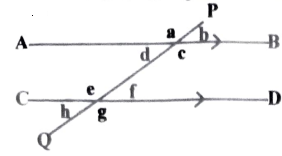
Which of the following statements is true?- Angle b and g are corresponding angles.
- Angle a and e are co-interior angles.
- Angle h and g are vertically opposite angles.
- Angle c and e are alternate angles.
- The area of a triangular piece of land is 22.5 Ares. It has a base length of 250 metres. What is its height in metres?
- 90m
- 45m
- 360m
- 18m
- Which of the following properties is true in both a rhombus and a parallelogram?
- All sides are equal.
- The sum of interior angles adds up to four right angles.
- Diagonals bisect each other at right angles.
- Each interior angle is a right angle.
- The total length of a barbed wire round a square piece of land is 144m. What is the area of the piece of land in square metres?
- 1 296
- 20 736
- 576
- 5 184
- Simplify:
3/5 (40x − 25y) + 2/3 (18x − 21y)- (36x − y)
- (36x + 29y)
- (36x + y)
- (36x − 29y)
- What is the value of a (3c - 2b)
d
when a = 2, d = 5, b = 3 and c = 4?- 11/5
- 33/5
- 22/5
- 21/3
- What is the value of letter y in the equation below? 5(3y − 2) = 2(3y + 13)
- 4
- 9
- 6
- 3
- Simplify the inequality 2(x − 1) < x + 4
- x < 2
- x < 6
- x > 2
- x > 6
- Find the value of angle m in the figure below.
- 144°
- 108°
- 128°
- 116°
- Construct triangle PQR in which line PQ = 6.5cm, angle QPR = 30° and angle PRQ = 40°. Draw a circe that touches points P, Q and R. What is the radius of the circle?
- 4.6cm
- 3.5cm
- 5.2 cm
- 2.5cm
- The top of a 17m ladder leans on a vertical wall with its lower end touching the ground. Which one of the following sets of measurements represents the height of the wall and the horizontal distance from the ladder to the wall?
- 5m and 12m
- 3m and 4m
- 6m and 8m
- 8m and 15m
- What is the total value of digit 8 in the decimal number 3.52842?
- 8/1000
- 8/10000
- 8/100
- 8/10
- Which one of the following fractions will give a recurring decimal?
- 16/25
- 7/34
- 5/36
- 11/50
- Work out:
√0.0324- 0.0018
- 0.018
- 0.18
- 1.8
- What is 11/16 as a percentage?
- 68.75%
- 6.875%
- 0.6875%
- 0.06875%
- The sketch below shows possible routes to school from Kagu's home.
What is the distance from Kagu's home to school through the health center in kilometres?- 56.2
- 10.8
- 43.8
- 31.5
- The radius of a bicycle wheel is 21cm. How many turns will it make to cover a distance of 6.6km?
- 50 000
- 5 000
- 500
- 50
- The cost of a plot in Isinya in the year 2020 was sh. 400 000. After one year, the cost of the plot appreciated by 35%. What was the cost of the plot in the year 2021?
- Sh. 140 000
- Sh. 480 000
- Sh. 540 000
- Sh. 435 000
- A rectangular piece of land measures 32.4m in length and 26.8m in width. Kiba fenced this land with four strands of barbed wire. What was the length of the wire used?
- 473.6m
- 59.2m
- 118.4m
- 236.8m
- In the year 2021, covid related deaths in a certain country was 3 500. In the year 2022, this number reduced by 26%. How many people died of covid in the year 2022?
- 4410
- 910
- 3 140
- 2 590
- Find the perimeter of the shape drawn below.
- 33cm
- 48cm
- 58cm
- 63cm
- There was 1 800 litres of water in a tank. During construction, 68% of the water was used. How much water was left in the tank?
- 1 224L
- 1080L
- 5761L
- 1 276L
- What is the area of a circle whose radius is 28cm?
- 616cm2
- 4 928cm2
- 1 232cm2
- 2 464cm2
- The figure below represents a model cuboid made from wire rods.
Calculate the total length of the wire rods needed to make the model.- 152cm
- 308cm
- 1 728c
- 652cm
- Figure ABCD is a rhombus. Line BD and AC are diagonals. Angle BDA = 35°
What is the size of angle BAC?- 35°
- 110°
- 70°
- 55°
- The table below shows Wanjala's expenditure for the month of December 2021. The information on the expenditure on clothing is not indicated.
A pie chart was drawn to represent the information above. If the angle representing the expense on food was 100°, how much was used on clothing?Item Rent Food Saving Clothing Amount Sh. 6 000 Sh. 5 000 Sh. 4 000 - Sh. 4 000
- Sh. 3 000
- Sh. 8.000
- Sh. 2 000
- A length of 3.2cm era on a scale drawing represents an actual length of 9 600m. What is the scale used?
- 1:3 000
- 1:30 000
- 1: 300 000
- 1:3 000 000
- The graph below shows a journey of a cyclist from town X to town M, a distance of 100km. On the way, he stopped to relax. He then continued with the journey to town M
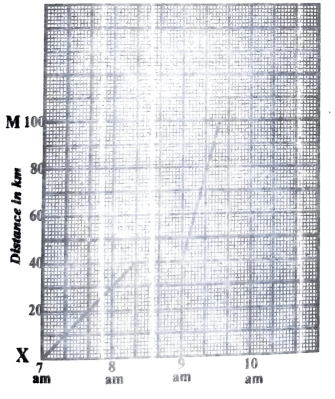
What was his average speed for the whole journey?- 40km/hr
- 50km/hr
- 48 km/hr
- 35km/hr
- The mean mark scored by five pupils in an examination was 82. If the marks of four of them were 84, 96, 78 and 64, what was the score of the fifth pupil?
- 68
- 84
- 74
- 88
- Which of the following nets can form a closed cube when folded?
MARKING SCHEME
- D
- A
- C
- B
- D
- A
- C
- D
- D
- A
- C
- B
- D
- A
- D
- A
- D
- D
- D
- A
- D
- D
- B
- A
- D
- C
- A
- B
- A
- C
- D
- A
- D
- C
- C
- D
- B
- C
- A
- D
- C
- B
- D
- A
- D
- B
- C
- A
- D
- A
Integrated Science Questions and Answers - CBC Grade 6 KPSEA End Term 3 2022 Set 2
Questions
- A push or a pull on an object is referred as
- weight.
- force.
- energy.
- volume.
- Grade five learners were doing an experiment on different substances. What happened when they put red litmus paper in ash solution? It turned
- blue
- yellow .
- grey
- red
- Three of the following are safety precautions when handling plants. Which one is not?.
- wear gloves on your hands.
- wash hands using soap after handling plants.
- wear protective gears.
- any fruits or leaves.
Use the diagram below to answer question 4
- Which part in the above diagram shows where the baby grows
- X
- Z
- Y
- M.
- Which part of a plant absorbs water and supports the plant firmly?
- Fruit
- Flowers
- Roots
- Stem.
- Alisha and Maureen were playing on the see-saw as show below.
Which of the statements below is true? .- Alisha is heavier than Maureen.
- Maureen is heavier than Alisha.
- For them to balance they should both move away from the fulcrum.
- Alisha should move closer to the pivot for them to balance.
- The following are blood groups. Which group is referred to as universal donor?
- B
- O
- A/B
- A .
- Waste can be managed in the following ways except
- reducing.
- excretion
- reusing.
- recycling.
- Grade 4 learners were asked to type a friendly letter during their English lesson. Which part of the computer did, they use to enter the letters?
- Central Processing Unit:
- Monitor.
- Keyboard.
- Word.
- Below are characteristics of a certain group of animals.
- They live partly on land and partly in water.
- They lay eggs.
- They do not have a constant body temperulure.
- They breathe through lungs.
Which of the following groups fit then description above?- Reptiles .
- Fish
- Mammals..
- Bird.
- Which of the following parts is correctly matched with its function?
- S - used to give instructions
- T - used to type.
- Z - shows or displays what is happening.
- V - connects the digital device to the hardware.
- The following are water pollutants. Which one is not?
- Oils spills.
- Smoke
- Sewage.
- Factory water
- Four learners were asked to identify the state of matter that has the following characteristics.
- have definite shape.
- have definite volume.
- have definite mass.
Who gave the correct answer?- Juma - liquids.
- Mariam insulators.
- Abdi - gases.
- Sarah - solids.
- A metallic ball sinks in water while a plastic one will float. This is due to
- material.
- shape.
- size.
- mass.
- Which waterborne disease can be controlledby draining stagnant water?
- Dysentery.
- Bilharzia.
- Typhoid.
- Cholera.
- Which of the following is not a form of gardening?
- Vertical gardening.
- Kitchen gardening.
- Market gardening.
- Horizontal gardening.
- The following tools are used in farm. Which one is used for weeding?
- Jembe.
- Prunning saw.
- Sickel.
- Axe.
- Grade five learners in Makongeni school were asked to name the part of the vegetable eaten. Which pupil gave the correct answer?
Vegetables Part eaten A. Mercy carrots fruits B. Paul Onion bulb C. Tom Tomatoes leaves D. Natalie Kales roots - Mr. Mwema was adviced by an Agricultural officer to instal gutters to avoid soil erosion near his house. Which type of erosion was he controlling?
- Sheet erosion.
- Rill erosion
- Splash erosion.
- Gulley erosion.
- Which part of planting material is used to plant pumpkin?
- Seed.
- Leaves
- Cutting.
- Roots
- The following animals can be controlled by the use of a fence except a
- squirrel.
- Mongoose
- hare.
- bird
- The following are creeping crops except
- pumpkin.
- cabbage.
- calabash.
- watermelon.
- Birds kept for laying eggs are called
- broilers.
- dairy.
- layers.
- beef.
- Rice is grown in _______ type of soil
- clay soil
- cotton soil
- sandy soil
- loam soil
- The best way for controlling gulley erosion is by
- building gabbions.
- making terraces.
- planting cover crops.
- contour farming.
- Which term is used to describe the process of collecting soil from deposition sites and using it to replace the lost top soil?
- soil erosion.
- run-off.
- solid deposit
- soil recovery.
- Calton was seen in the school garden carrying out the practice below. Which gardening practice was this?
- Weeding.
- Mulching.
- Watering.
- Thinning.
- Which of the following crop is not a legume?
- Maize.
- Peas.
- Bean.
- Groundnuts.
- Three of the following crops are grown in a sunked seedbed except
- kale.
- spinach
- tomatoes
- Sugarcane
- Grade four learners made the structure below.
What was the function of the structure above?- make the farm attractive
- breed rodents.
- scare animals.
- entertainment.
- Grade 5 pupils from Heshima Academy grouped food in groups below. Which group consist of food that provide our bodies with fats and oil?
- Beans, groundnuts, lentils.
- Samosa, mandazi, pancakes.
- Butter, cheese, red meat.
- Chicken, ice cream, oily spinach.
- Identify the bleaching symbol shown below.
- Do not bleach.
- Any bleach is ok.
- Bleach with caution.
- Oxygen bleach only.
- The following are some of the measures that can be used to prevent common communicable diseases. Which one is not?
- Cleaning and disinfecting shared surfaces.
- Shaking hands.
- Avoid sharing personal items.
- Regular washing of hands...
- Which of the following diseases is caused by nutritional deficiency?
- Measles.
- Elephantiasis.
- Mumps.
- Kwashiokor.
- Name the embroidery stitch shown below.
- Chain stitch.
- Stem stitch.
- Satin stitch.
- Loop stitch.
- Below are some of the reasons for stuffing shoes after cleaning except to
- make them look smart
- maintain the shape
- improve the quality
- keep off small animals and snakes.
- Misuse of cosmetics can cause the following dangers except
- diarrhoea.
- headaches.
- face rash.
- skin irritation.
- Which of the list below consist of tools used sowing only?
- (i), (ii), (iii)
- (ii), (iii), (v)
- (ii), (iii), (iv)
- (iii), (iv), (v):
- Which is the best stitch to use in repairing a gaping seam?
- Backstitch,
- Chain stitch.
- Hemming stitch.
- Double stitch.
- Pupils in Lamu Academy were asked to nam one basic method of weaving used in fabri construction. Who among the following giri named the correct method?
- Mary - Double weave.
- Ann - Flat weave.
- Liz - Cotton weave.
- Terry - Plain weave
- Inorder to improve pool hygienes, which one of the following should be observed?
- Always use floaters and lifesavers to save you from drowning
- Do not swim immediately after taking meals
- Avoid diving at the shallow ends of the pool
- Visit the toilet before going to swim.
- Martin was scen swimming using the technique below.
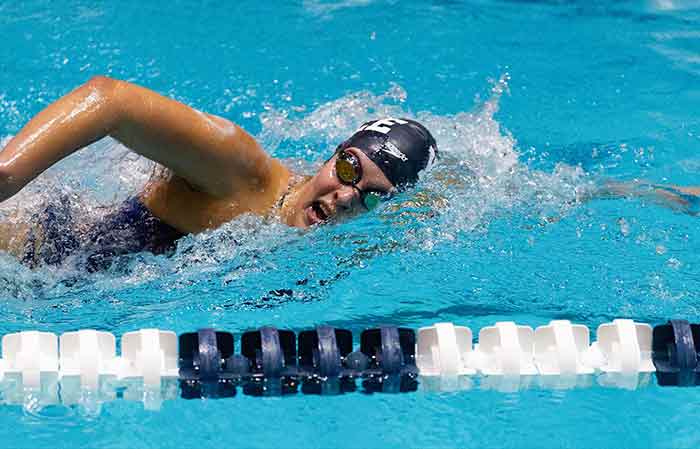
which swimming technique was Martin likely to be practising?- Breast stroke.
- Sidestroke.
- Diving
- Backstroke.
- The following are points to be followed while performing a one handed catch in a frisbee game except
- always aim to catch the disc with one hand
- avoid catching the disc using your thumb and fingers.
- Watch and time the oncoming disc carefully as it flies towards you .
- stand with your feet shoulder width apart with your knees slightly bent.
- Joel got hurt on his knce while playing a soccer game. Which one of the following steps of managing the wound should come first?
- Cleaning the wound well.
- Applying an antiseptic such as spirit or dettol.
- Bandages the wound well to avoid blecding.
- Apply alcohol or swap to the area.
- A method of starting a race where the knees of the rear leg is opposite to the 10e of the Ieading leg with hand placed shoulder width apart is known as
- bunch start
- clongated print start
- medium spirit start
- standing start.
- Grade 6 boy was seen playing a handball skill shown below.
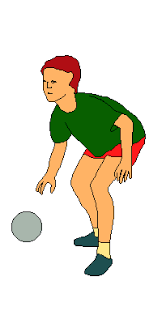
Which one of the following statements is false about the skill above?- It aims at making a score froin an ordinary . position.
- It allows one to advance with the ball.
- Enables a player to go past a defender.
- It is a defensive skill used by the goal keeper only.
- A game of rounders is played by ______ players.
- 9
- 7
- 8
- 11
- While practising for balance, a PHE instructor can encourage his learners to peerom the following skills except
- V-balance.
- T-balance.
- crouch balance.
- rope work skills.
- The following are attacking skills used in a Kabaddi game
The attacking skills shown above is known- toe touch.
- foot touch
- side kicking
- hand touch
- During a PHE practical lesson, leaners practised the following types of passes.
- Overarm pass
- Underarm pass
- Chest pass
- Bounce puss
Which of the above passes is ased to pass ihe ball over a short distance?- (iii)
- (iv)
- (ii)
- (i)
Marking Scheme
|
|
|
|
|
Social Studies and Religious Education Questions and Answers - Class 7 End Term 2 2022 Set 2
Questions
Use the map of Tira area to answer questions 1-7.
- The direction of Eloe market from the hills is;
- North West
- South West
- North East
- South East
- The main source of water for domestic use in Tita area is
- from the hills
- rain water
- from the swamp
- from the lake
- The reason why the road around the forest is winding is:
- to avoid disrupting the flow of the river
- that the area is hilly
- to shorten the distance
- to create space for tea growing
- Worshippers in Tita area are likely to attend religion services on;
- Sunday
- Friday
- Thursday
- Saturday
- The following economic activities are practised in
Tita area except:- lumbering
- mining
- farming
- tourism
- The settlement scheme in South Western part of Tita can be described as;
- sparsely populated
- densely populated
- clustered
- linear
- Which one of the following is the MAIN economic importance of the game reserve in Tita Area?
- It keeps endangered animal species
- It attracts tourists
- It has led to improvement of infrastructure
- It has led to development of agricultural activities
- Which one of the following groups consists of the Highland Nilotes of Eastern Africa?
- Sebei, Kipsigis, Marakwet
- Nandi, Elgeyo, Alur
- Iteso, Shilluk, Pokot
- Acholi, Waarusha, Tugen
- Which one of the following statements is NOT true about the rotation of the earth?
- The earth rotates in an anticlockwise direction from West to East
- Rotation of the earth causes day and night
- It takes the earth 24 hours to complete one rotation.
- The earth's rotation causes different seasons
- Below is a description of the conditions required or the growth of a certain crop in Africa;
- high temperatures of between 20°C -28°C
- deep well-drained fertile soils
- a warm dry period before harvesting
- hot and wet climate
The above are conditions that are suitable for the growth of;- coffee
- tea
- cloves
- bananas
- Who among the following early visitors not a trader?
- Carl Peters
- Seyyid Said
- John Speke
- William Mackinnon
- The following are some African traditional leaders:
- Nabongo Mumia
- Oloibon Lenana
- Karuri wa Gakure
- Lewanika of the Lozi
Which one of the following is a similarity among the above leaders?- They opposed colonial rule in their territories
- They led an armed resistance against British colonial rule
- They took the British colonialists as their good friends
- They fled from their territories when the British arrived
- All the following are ways in which members with special needs in the society can be treated equally as members of the society except;
- providing equal opportunities for them
- building positive attitudes about them
- preventing them from mixing with other people in public
- creating a friendly environment for them
- According to the constitution, a foreign lady married to a Kenyan man may become a Kenyan citizen if she;
- applies for Kenyan citizenship
- obeys the laws of the land
- takes good care of her family
- lives in Kenya for more than ten years
- Below are four communities found in Eastern Africa;
- Baganda
- Wanyamwezi
- Abagusii
- Agikuyu
Which one of the following statements is pot true about the communities listed above?- They migrated in search of fertile land for cultivation
- They belong to the same language group
- They used the same route during their migration to Eastern Africa
- They migrated to Eastern Africa from a common origin
- Which one of the following mountains was formed as a result of faulting?
- Ruwenzori mountains
- Mount Meru
- Atlas mountains
- Cameroon mountains
- Which one of tho following prominent African leaders was not part of the founders of the OAU
- Haille Selassie
- Julius Nyerere
- Kwame Nkrumah
- Jomo Kenyatta
- The diagram below shows the formation of a lake. Which one of the following lakes was formed through the process shown below?
- Lake Teleki
- Lake Jipe
- Lake Kyoga
- Lake Tana
- Which one of the following pairs of countries were colonised by Germany during the scramble for Africa?
- Algeria and Tunisia
- Mozambique and Malawi
- Cameroon and Zimbabwe
- Tanganyika and Cameroon
- Which one of the following is a manufacturing industry?
- Milk factory in Naivasha
- The fruit canning industry in Thika
- The sugarcane milling in Mumias
- The cement factory at Bamburi
- Which one of the following groups consists of fresh water lakes in Kenya?
- Nakuru, Magadi
- Turkana, Baringo
- Naivasha, Nakuru
- Elementaita, Naivasha
- Which one of the following is the BEST way of controlling gulley erosion?
- Planting trees
- Digging terraces
- Constructing gabions
- Applying mulches
- Which one of the following is the MAIN line of longitude?
- The Arctic circle
- The Greenwich Meridian
- The Tropic of Cancer
- The Tropic of Capricorn
- Traditional cultural artefacts are preserved in the museums mainly to;
- earn foreign exchange
- encourage trade
- create jobs in the country
- help us to learn how people lived in the past
- Below are statements describing the vegetation of a certain climatic region,
- plants have deep roots
- plants have thick and wary barks
- plants have needle-like leaves
The vegetation described above is found in the;- desert climate
- equitorial climate
- tropical climate
- mediterranean climate
- During the pre-colonial period, the Ameru were ruled by,
- a council of elders
- a king
- a chief
- an emperor
- Which one of the following is an economic reason for the scramble for and partition of Africa?
- To spread Christianity
- Search for market for European industrial goods
- As a show of power
- To settle surplus population
- The problem of road accidents in Kenya can best be solved by;
- jailing traffic offenders for life
- cancelling driving licences for careless motorists
- educating road users on how to use the roads wisely
- coming up with very strict traffic laws
- Who were the Wanyampahala in the Wanyamwezi chiefdom?
- The council of elders
- The chiefs
- The priests
- The mercenary soldiers
- Which one of the following countries is NOT a member of SADC?
- Lesotho
- Congo
- Namibia
- Angola
- Below is a description of a town in Eastern Africa;
- it is the headquarter of a continental organization
- it was founded and named by one leader as the new flower
- it is the capital city of a country
- it is located in the central part of the country
The town described above is likely to be;- Addis Ababa
- Dodoma
- Dar-es-Salaam
- Arusha
Use the map below to answer questions 32 to 33.
- The Island country marked F is most likely to be;
- Comoros
- Madagascar
- Mauritius
- Cape Verde
- Which one of the following statements is NOT correct about the ocean current marked E?
- It is a cold current
- It originates from the South pole
- It has influenced the Namib desert
- It causes heavy rainfall to the West African countries
- The tributary marked G is known as;
- Blue Nile
- Albara
- White Nile
- River Tana
- The climate experienced in the shaded region marriage marked H is;
- mediterrancan
- mountan climate
- temperate cliniate
- equitorial climate
- The most developed means of transport in Africa is;
- air transport
- railway transport
- water transport
- road transport
- The Bantus who migrated into South Africa and later fled to Eastern and Central African respectively were;
- Ndebelo and Ngoni
- Ngoni and Ndebele
- Zulus and Venda
- Venda and Zulu
- All the following are examples of lowland forests in Kenya except;
- Arabuko-Sokoke forests
- Mangrove forests
- Shimba hills
- Mau ranges
- Which one of the following has not led to the rapid industrial development of South Africa?
- Availability of variety of raw materials
- Availability of cheap labour
- Availability of sources of energy
- Availability of crude oil
- Which of the following statements describes direct democracy?
- Citizens must agree with what the government decides
- All citizens are involved in making decisions
- Citizens elect representatives to make decisions for them
- All decisions are made by the head of the state
- One of the results of the interaction between the Agikuyu and the Maasai during the pre-colonial period is that;
- the Agikuyu learnt the skills of crop farming from
- the Agikuyu intermarried with the Maasai
- Maasai borrowed the art of circumcision from
- the Maasai learnt the practise of cattle keeping
- Laibon Lenana collaborated with the British because he wanted;
- to acquire better breeds of cattle
- to be trained as a soldier
- to get support against his enemies
- his people to get Western education
- Who among the following members of the school management ensures that money is used properly?
- The sponsor
- The treasurer
- The chairman
- The headteacher
- Which of the following types of marriages allows a man to marry up to four wives?
- Islamic marriage
- Hindu marriage
- Christian marriage
- Traditional
- Which one of the following types of industries has existed in Kenya since the pre-colonial period?
- Paper making
- leather making
- Fruit canning
- Cotton winning
- The green colour in the National Flag of Kenya represents the;
- peace enjoyed by the citizens
- rich agricultural land
- beauty of the forest
- love for the country
- Which one of the following was a characteristic of African education?
- Songs were used as a method of teaching
- Children were allowed to choose what to learn
- Children started learning after initiation
- Parents avoided teaching their own children
- Which of the following activities is likely to weaken national unity in Kenya?
- Amending the constitution
- Employing relatives
- Using a national language
- Pardoning reformed prisoners
- Which of the following is a qualification for a person who wishes to be elected as a member of the National Assembly in Kenya? One must;
- be a civil servant
- be a Kenyan by birth
- be over 35 years of age
- be registered as a voter
- Jane, a standard 8 pupil was punished by her class teacher for arguing against some schools rules. Which one of the following fundamental freedoms was Jane denied?
- Freedom of expression the Maasai
- Freedom of association
- Freedom of assembly
- Freedom of worship the Agikuyu
- Which one of the following is the main reason as to why Kariba dam was built? from the Agikuyu
- To generate hydro-electric power
- To control floods on R. Lambezi
- To create a lake for fishing
- To provide water for irrigation
- Which one of the following groups of communities lives in West Africa?
- Ankole, Nuer, Banyoro
- Zulu, Xhosa, Nyori
- Hausa, Soninke, Ashanti
- Amhara, Bemba, Berbers
- Which one of the following statements is true about assimilation used by French in Senegal?
- Africans refused to vote in general elections
- Africans became citizens of France
- The French were made to learn African language
- The French appointed Africans to rule Senegal
Study the diagram below and use it to answer question 54
- The diagram above illustrates the formation of;
- relief rainfall
- a land breeze
- a sea breeze
- convectional rainfall
- Which of the following pairs of lakes indicates fresh water lakes only?
- L. Magadi and L. Tanganyika
- L. Kyoga and L. Victoria
- L. Bogoria and L. Nakuru
- L. Naivasha and L. Elementatita
- The road sign below tells the motorists;
- to give way
- there is no way
- the road is closed
- they cannot enter
- The political party that led Ghana to independence in 1957 was;
- Convention People's Party
- Muslims Liberation Party
- Northern Front Movement Party
- United Gold Coast Convection
- Which one of the following African countries did NOT use armed struggle during their fight for independence?
- Mozambique
- Zimbabwe
- Kenya
- Ghana
- Who is the most senior officer in the judiciary?
- President
- Chairman
- Attorney General
- Chief Justice
- The major reason why people moved from one place to another in the past was;
- spirit of adventure
- diseases and pests
- war and raids
- search for pasture
PART II CHRISTIAN RELIGIOUS EDUCATIS
- Which one of the following was create on day of creation?
- Firmament
- Vegetation
- Birds
- Wild animals
- Who among the following people was not a son of Noah?
- Ham
- Seth
- Shem
- Japheth
- Moses' father-in-law lived in the land of;
- Canaan
- Haran
- Egypt
- Midian
- The main reason why the Isrealites celebrated the
Passover in Egypt was to remember;- the day they crossed the Red Sea
- the death of the Egyptians first borns
- their journey in the wilderness
- their deliverance from slavery
- Which one of the following commandments teaches about respect for other people's property?
- Do not steal
- Do not accuse anyone falsely
- Do not commit adultery
- Do not commit murder
- King David broke all the following commandments except;
- do not commit murder
- do not commit adultery
- do not covet
- do not worship other god
- The son of the Shunamite woman was brought back to life by;
- Elijah
- Elisha
- Peter
- Jesus
- The prophet of God who was thrown into the den of lions also;
- was stoned to death
- ate wild honey and locusts
- prophesied that Jesus would be born in Israel
- read and interpreted the written script on the wall
- The prophet who ate scrolls and confessed that it was as sweet as honey was;
- Daniel
- Ezekiel
- Isaiah
- Jeremiah
- When Jesus was born, the first people to visit Him were;
- the shepherds
- the wise men
- Annah and Simeon
- the soldiers
- How did John the Baptist prepare the way for the long awaited Messiah?
- Preaching to the people to change their ways of life
- By constructing clear roads
- By baptizing Jesus Christ
- By dying for the sake of Jesus Christ
- "... This is my own dear son with whom I am pleased with, listen to Him." These words were said during;
- thc crucifixion of Jesus
- the temptations of Jesus
- transfiguration of Jesus
- the baptism of Jesus
- "......courage my son! Your sins are forgiven." (Matthew 9:2) Jesus said these words when He;
- forgave the repentant thief
- resurrected Lazarus
- healed the man possessed with demons
- healed the paralysed man
- The following books of the Bible are classified as prophetic books except;
- Nehemiah
- Daniel
- John
- Revelation
- When Jesus went to the Garden of Gethsemane pray, He was accompanied by;
- Peter, Philip and Thomas
- James, Peter and John
- John, peter and Andrew
- James, Matthew and peter
- "......... take and eat it.” He said, "this is my body.” (Matthew 26:26). Jesus said these words when He;
- multiplied fish and bread
- shared a meal with His disciples in
- changed water into wine
- fed the five thousand men
- Who among the following offered to bury the body of Jesus after His death?
- Simon of Cyrene
- Mary Magdalene
- Nicodemus
- Joseph of Arimathea
- The main reason why Stephen the leader of the deacons faced his death was because he;
- did not pay taxes
- healed on the Sabbath
- refused to deny Jesus
- baptised the Gentiles
- The book that outlines the activities of the apostles
- Luke
- John
- Matthew
- Acts
- Which one of the following beliefs about God is found in both traditional beliefs and Christianity?
- God has a son
- God is three in one
- God is the creator
- God will send his son on earth
- The two early believers who lied to the Holy Spirit and died were;
- Anania and Saphira
- Stephen and Paul
- Aquila and Priscilla
- Judas and Nicodemus
- The work of priests in Traditional African Society was
- make herbal medicine
- read the scriptures
- offer sacrifices
- declare war against enemies
- Which one of the following is a rite of passage in Traditional African Society?
- Baptism
- Confirmation
- Wedding
- Death
- The main value taught to children in African Traditional Societies was;
- obedience
- responsibility
- honesty
- humility
- The following are effects of bad relationships in the family except
- living a pleasant life
- family breakages
- drug abuse
- disrespect among the members
- Christians can use their leisure time best by;
- practising in the choir
- visiting and helping the needy
- preaching the gospel,
- building their houses
- In African Traditional Societies, people worshipped their God in;
- churches
- caves
- mountains
- shrines
- Njeri has been hiding during CRE lessons because she hates the CRE teacher. The best advice you can give to her is to;
- tell her to transfer to another school
- continue hiding until the teacher transfers
- tell her the advantages of forgiveness and attending classes
- continue with the habit because it is her own choice
- Your deskmate, Anita, has dropped from school because she wants to work in her father's shop. How best can you help her?
- Ask her to give you her books
- Report her to the chief of the area
- Tell her to be giving you money
- Tell her the advantages of completing education
- Shirleen, a std 7 girl, has been given some work by her mother to do after completing her homework. She is not happy because she wanted to go and play with her friend. What is the best action you can take as a Christian?
- Ask her to tell her mother that she wants to go and play
- Assist her in the work given
- Tell her to continue with her plans and leave the work
- Tell her to be obedient to her mother
Marking Scheme
- C
- D
- B
- D
- A
- C
- B
- A
- D
- C
- C
- C
- C
- A
- C
- A
- D
- A
- D
- D
- B
- C
- B
- D
- A
- A
- B
- C
- A
- D
- A
- C
- D
- A
- C
- D
- B
- D
- D
- B
- B
- C
- D
- A
- B
- B
- A
- B
- D
- A
- A
- C
- B
- B
- B
- D
- A
- D
- D
- B
CRE
- C
- B
- D
- D
- A
- D
- B
- D
- B
- A
- A
- C
- D
- C
- B
- B
- D
- C
- D
- C
- A
- C
- D
- A
- A
- B
- D
- C
- D
- D
Science Questions and Answers - Class 7 End Term 2 2022 Set 2
- Which one of the following is not a way of controlling internal parasites?
- Spraying,
- Proper sanitation.
- Deworming.
- Cooking food properly.
- Which of the following components of blood is the most abundant?
- Platelets
- White blood cells.
- Plasma.
- Red blood cells
- The part of the breathing system where carbon dioxide is taken from the blood is the
- nose
- windpipe.
- branchus.
- alveolus.
- The diagram below represents a maize flower
The part labelled Pabove is made up of- anthers and filament.
- filament and stamen.
- stigma and anthers.
- styles and stigmas.
- Which of the following foods given to a child suffering from me
- Balanced diet.
- Vitamins
- Proteins.
- Mineral salts.
- Below are characteristics of a certain animal;.
- It breathes through lungs.
- It lays eggs.
- its body is covered with scales. .
- Its body temperature varies with the of the surrounding.
Which of the following animals cannot be put in the same group with the animal having the characteristics above?- Snake.
- Crocodile.
- Gecko.
- Toad.
- The diagram below represents a plant

Which one of the following plants does not store food in the same place as the plant drawn above?- Sugarcane.
- Irish potato.
- Arrowroot
- Ginger.
- Which one of the following statements is true about all amphibians? They
- lay eggs on the land near water.
- have constant body temperature.
- have scales on their bodies.
- have soft moist bodies.
- The liquid part of blood mainly
- transports digested food.
- transports oxygen around the body parts.
- stops bleeding after injuries.
- fights disease causing germs.
- Which one of the following livestock parasites does not affect the internal organs of an animal?
- Liverflukes.
- Fleas.
- Roundworms.
- Lungworms
- Which one of the following physical changes during adolescence is correctly matched?
Boys Girls- Broadening of hips growth of beards
- Wet dreams voice breaks
- Growth of beards menstrual flow
- Broadening of shoulders production of sperms
- For good health, one requires
- cleanliness and smoking.
- food and alcohol.
- sleep and drugs.
- sleep and exercise.
- Which of the following groups of materials are all insulators?
- Copper, plastic, wood.
- Aluminium, plastic, glass.
- Glass, wood, plastic.
- Aluminium, silver, copper.
- Which one of the following is not a source of current electricity?
- Dry cells.
- Electric cookers.
- Solar panels.
- Geothermal station.
- The best way of staying away from drug abuse is by
- following parental advice.
- imitating peer's behaviour.
- trying to find out the effect.
- using legal drugs only.
- The following is a description of a certain method of food preservation:
- Dehydrates food.
- Kills germs.
- Eliminates bad smell in faadi
- Common in both rural and urban areas.
The method described above is- refrigeration.
- sun drying.
- use of honey.
- freezing.
- All the following immunisable diseases in infants are vaccinated against at six, ten and fourteen weeks. Which one is not?
- Diptheria.
- Pertusis.
- Tetanus.
- Tuberculosis.
- Revolution is the movement of the
- moon round the sun
- sun round the moon
- earth round the sun
- sun round the earth
- The diagram below represents a man warming himself by the fire.
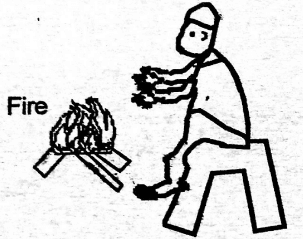
Which one of the following shows how heat reaches the hands and the legs respectively?- Conduction, radiation
- Radiation, conduction
- Convection, conduction
- Convection, radiation
- Which one of the following practices involves conservation of water by re using?
- Use of drip irrigation.
- Flushing toilets with water that has been used for rinsing clothes.
- Storage of water for use in case of shortage.
- Collecting rain water from the roof of a house
- Vibrating objects produce
- sound
- light
- heat
- force
- Which of the following statements is true about nimbus clouds?
- Are irregularly shaped.
- Appear in hot afternoon.
- Are dome-shaped on top.
- Are found high in the sky.
- Which of the following is not a type of a force?
- Gravitational pull.
- Weight
- Pressure.
- Friction.
- Which one of the following is a characteristic of wind pollinated flowers?
- Large in size
- Stigma bangs outside the flower
- Few heavy pollen grains
- Small anthers firmly attached to the filament.
- A pupil hanged her clothes on a clothline and noticed that it took long for them to dry. The weather was most likely to be
- cold and calm.
- cold and windy.
- dry and cold.
- hot and windy.
- Which one of the following body structure in the table below is not correctly matched with it function?
Structure Function- Mouth food broken into small particles.
- Liver produces digestive juice.
- Large intestines absorbs water and mineral salts
- Small intestines stores undigested food
- To measure force, we neea:
- beam balance.
- weighing balance.
- see-saw.
- spring balance.
- What would happen if two wooden blocks weighing 10kg and 1kg respectively were to be dropped from a height of 2m at the same time? They would
- break into pieces.
- reach the ground at the same time.
- add weight to air
- float in the air.
- Three of the diagrams below can be used to made use of in a periscope except
- formation of images.
- reflection of light.
- obstruction of light to form shadows
- bouncing off of light.
- Which one of the following consists of only female parts of a power?
- Filament, anthers, style. Function
- Stigma, ovules, petals. food broken into
- Style, ovary, sepals. small particles.
- Stigma, ovary, style, produces digestive juice.
- Hookworms are not mally found in
- cattle and pigs.
- sheep and goats.
- pigs and poultry.
- sheep and cattle.
- Faeces and decaying animal and plant matter
- destroy crops.
- make the soil poor for cultivation.
- add humus to the soil.
- are of no importance to the soil.
- Which one of the following farm animals is correctly matched with its products?
- Goat - mutton, skin, milk
- Sheep - hide, wool, milk
- Cow - milk, mohair, skin
- Pig - pork, cheese, skin
- Three of the following aspects of light ars Which one does not?
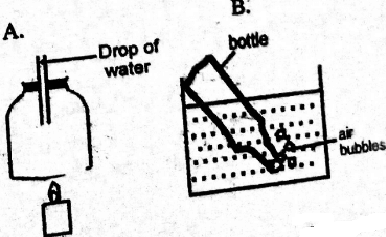
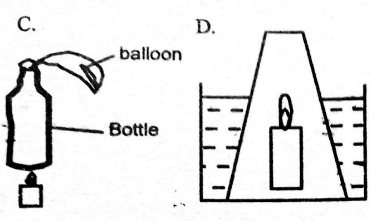
- Which one of the following is the smallest and largest planet respectively?
- Mercury and Jupiter
- Mercury and Neptune.
- Jupiter and Venus.
- Saturn and Jupiter.
- Which one of the following component of the environment is the most polluted?
- Water
- Air
- Plants
- Soil
- Which one of the following is an artificial method of lighting a house?
- Windows
- Translúscent roofs
- Large doors
- Bulbs and use of H. E. P electricity.
- Which one of the following scientific statements on properties of matter is
- Liquids have definite volume.
- Gases have no definite mass.
- Liquids have definite mess.
- Solid have definite size and volume.
- The convection box below was set up and used by class 5 pupils to demonstrate convection of heat in air.
If the candle was placed at the point marked X, at what point did the pupils put the smoldering rag to produce better results?- 3
- 2
- 1
- 4
- Drainage, capillarity and aeration in soil all depend on
- the slopiness of land.
- proportional composition of the soil.
- colour and organic matter in the soil.
- type of mineral available in the soil.
- In which one of the following processes is carbon dioxide not used?
- Germination.
- Making plant food.
- Putting out fire.
- Preservation of soft drinks.
- The following are ways of maintainig tools except
- repairing broken tools.
- improper use of tools.
- sharpening cutting tools.
- cleaning tools after use.
- Which of the following is false about arteries?
- They have big valves,
- Blood is under high pressure
- Have pulse.
- Have thick walls.
- Below is an illustration of changes of states of matter.
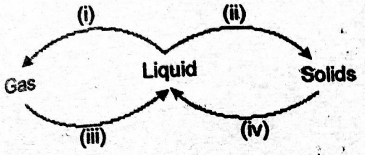
Which arrow shows the process that occur as a result of decrease in temperature?- (iii), (iv)
- (ii), (iii)
- (i), (ii)
- (i), (iv)
- Which of the following vaccine is administered thrice to infants through injection?
- Oral polio
- B.C.G vaccine
- DPT vaccine
- Anti-measles.
- Which one of the following is not a use of medicines?
- Causing diseases.
- Relieving pain.
- Curing known diseases:
- Preventing diseases.
- Which pair of foods are the main sources of protective foods?
- Meat and eggs.
- Cereals and legumes.
- Yams and cassava
- Fruits and vegetables.
- Which one of the following is the best method of transporting water over a long distance?
- Cans
- Animals
- Pipes
- Tankers
- Which material below is not needed when investigating the presence of air in soil?
- Water
- Candle
- Container
- Dry soil
- Which one of the following is not a use of heat energy?
- Cooking food
- Warming our bodies
- Drying clothes
- Seeing clearly
MARKING SCHEME
- A
- C
- D
- D
- A
- D
- C
- D
- A
- B
- C
- D
- C
- D
- A
- D
- D
- C
- D
- B
- A
- A
- D
- B
- A
- D
- D
- B
- C
- D
- D
- C
- A
- D
- A
- B
- D
- A
- B
- B
- A
- B
- A
- B
- C
- A
- D
- C
- B
- D
Kiswahili Questions and Answers - Class 7 End Term 2 2022 Set 2
Maswali
Soma vifungu vifuatavyo. Vina nafasi 1 hadi 15.Kwa kila pengo, umepewa majibu manne. Chagua jawabu lifaalo zaidi.
Wavyele na washikadau wengine katika 1 ya elimu 2 na wazazi kuhusu 3 la kudumisha nidhamu 4 watoto wa shule. Walimu wanawanyoshea kidole cha 5 wavyele hasa baada ya 6 ya kiboko 7 nchini. Kwa upande wao, wazazi wanajitetea kuwa walimu ndio kushutumiwa maadamu wanashinda 8 watoto hawa 9 . Hata hivyo, suala la nidhamu linahusisha kila mmoja katika jamii.
| A | B | C | D | |
| 1 | shirika | taasisi | sekta | kazi |
| 2 | wamehitilafiana | wameelewana | wameulizana | wamekubaliana |
| 3 | dhima | wadhifa | juhudi | jukumu |
| 4 | dhidi ya | miongoni mwa | mbali na | zaidi ya |
| 5 | lawama | laana | baraka | ushindi |
| 6 | vita | adabu | adhabu | mapigano |
| 7 | kupigwa vijembe | kupigwa dafrau | kupigwa kalamu | kupigwa marufuku |
| 8 | kwa | na | ya | pa |
| 9 | mchana kutwa | usiku kucha | usiku kutwa | mchana kucha |
Wakazi wengi wa mjini 10 na tatizo la uhaba 11 maji 12 . Jambo hili hufanya 13 yao kushindwa kuyatunza mazingira yao. 14 serikali ichukue hatua ya kusambaza maji kote ili kuepuka kuzuka kwa maradhi kama vile 15 .
| A | B | C | D | |
| 10 | wamekutwa | wanakabidhiwa | wanakabiliwa | wamejuzwa |
| 11 | la | ya | za | wa |
| 12 | masafi | safi | yasafi | msafi |
| 13 | baadhi | wengi | wengine | baina |
| 14 | Bora tu | Yamkini | Kama | Ni bora |
| 15 | pepopunda | kifaduro | waba | surua |
Kutoka swali la 16 hadi 30. jibu kila swali kulingana na maagizo uliyopewa.
- Tambua sentensi yenye tashbihi,
- Kaka yake ni msini kama usiku.
- Maneno yake yalikuwa msumari moto.
- Ukitaka kumla nguruwe chagua aliyenona.
- Unywaji pombe husababisha balaa na belua
- Mfinyanzi ni kwa finyanga kama vile msasi ni kwa;
- msako
- saka
- uasa
- uasi
- Tunasema Mkungu wa ndizi na ________ cha ufunguo
- kicha
- kifurushi
- kitita
- chane
- Andika tarakimu 100,001 kwa maneno.
- Laki moja elfu na moja
- Laki moja na moja elfu
- Laki mia moja na moja
- Laki moja na moja
- Alikiona kilichomtoa kanga manyoya.
Kiambishi 'ki' kimetumikaje katika sentensi hii?- Kuonyesha masharti
- Kuonyesha hali ya kuendelea
- Kuonyesha kiwakilishi
- Kuonyesha udogo
- Ni sentensi gani yenye kihisishi?
- Mchezaji yule ni hodari sana
- Kitoto kimezaliwa chini ya mti
- maneno yake yaliniumiza sana.
- Sote tulikimbia mkikimkiki.
- Majira baina ya saa tisa mchana na magharibi
- alasiri
- adhuhuri
- mawio
- macheo
- Tegua kitendawili kifuatacho;
Dhahabu yangu haishuki bei.- Macho
- Almasi
- Shamba
- Jiwe mtoni
- Chagua maelezo sahihi ya viungo vya mwili.
- Taya ni nyama zinazoshikilia meno
- Kwapa huwa chini ya bega
- Nyonga huwa juu ya kiuno
- Kisugudi ni scheinu baina ya muundi na wave
- Kanusha sentensi ifuatayo kwa usahihi.
Mtoto akila sana hunenepa.- Mtoto asipokula sana hunenepa
- Mtoto akila sana hanenepi.
- Mtoto akila sana huwa hanenepi.
- Mtoto asipokula sana huwa hanenepi
- Sentensi gani imetumia 'kwa' ya umilikaji?
- Wageni walikuja kwangu jana.
- Sherehe iliandaliwa kwa Maria. cha funguo
- Bi. arusi alikaribishwa kwa vishindo.
- Tulienda moja kwa moja hadi mjini.
- Farasi ni mnyama wa jamii ya punda. Farasi pia
- elimu ya mienendo ya nyota
- chombo cha kufumia nyuzi
- anayefuga wanyama wa kupandwa
- fremu ya baiskeli
- Shughuli yoyote ikitendwa kupita kiasi huharibika.
Chagua methali inayolingana na maelezo haya.- Ngoja ngoja huumiza matumbo
- Ngoma ikilia sana hupasuka kiwambo
- Tamaa mbele mauti nyuma
- Chombo cha kuzama hakina usukani
- Kikembe cha papa huitwaje?
- Kinengwe
- Kitekli
- Kiwavi
- Kipura
- Andika katika usemi wa taarifa;
“Tafadhali niletee miwani yangu nisome gazeti," babu akaniambia.- Babu alimwambia ampelekee miwani yake asome gazeti.
- Babu aliniagiza nimpe miwani yake asome gazeti.
- Babu aliniomba nimpelekee miwani yake asome gazeti
- Babu alimwamuru ampelekee miwani yake asome gazeti
Soma kifungu kifuatacho kisha ujibu maswali 31 - 40.
Waziri wa Afya nchini. Bwana Bora, amesema kuwa huduma za afya nchini zimeimarika kwa kiasi kikubwa katika miaka iliyopita. Akiwahutubia wananchi waliokuwa wamejumuika katika, zahanati mpya ya Pona Bw.Bora alisema kuwa wizara yake imeongezea zahanati takriban mia tatu katika kipindi kifupi, hasa katika sehemu ambazo wananchi walikuwa wakitembea kwa mwendo mrefu kusaka huduma. Alisema kuwa zahanati nyingi zilizojengwa majuzi zina vifaa vya kutosha kutoa huduma za kimsingi na kukabiliana na magonjwa yanayowataabisha wananchi kama vile malaria na homa ya matumbo. Aliongeza kuwa wizara yake imejenga maabara na kutoa mitambo ya kisasa katika zahanati hizo itakayoweza uhakika wa magonjwa yanayowasumbua wagonjwa. Alisema kuwa zahanati dawa za kutosha.
Aliongeza kuwa wizara yake imeongezea vituo vingi vya afya ili kuwahudumia wananchi. Vituo hivi vina mitambo iliyo na uwezo wa kupiga picha viungo vya ndani ili kuweza kutambua magonjwa ya ndani kwa ndani yanayowasumbua wananchi. Aliongezea kuwa kila kituo kina wodi ndogo zenye uwezo wa kuwalaza wagonjwa takribani thelathini. Hii ni hatua nzuri ikikumbukwa kuwa awali hata kupata dawa ilikuwa shida jambo lililowapelekea watu wengi kufariki.
Bw. Bora alitoa wito kwa wananchi wajitahidi kuyatunza mazingira. Hali hii itaweza kuwaepusha na magonjwa yanayoweza kuzuilika kama vile malaria na homa ya matumbo. Akitoa vyandarua vilivyotiwa dawa, Bw. Bora alisema kuwa sasa idadi ya watu wanaoambukizwa ugonjwa huu imepungua sana katika maeneo megni humu nchini. Alitoa mwito wa watu hasa kina mama wajawazito na watoto walale chini ya vyandarua. Waliougua walihimizwa kutafuta matibabu haraka iwezekanavyo. Aliwakumbusha kuwa matibabu ya malaria sawa na yale ya ugonjwa wa kifua kikuu na UKIMWI hutolewa bure kote nchini. Aliwahimiza wananchi kujua vianzo vya magonjwa mbalimbali ili waweze kujiepusha nayo.
- Kulingana na waziri wa Afya Bw. Bora;
- afya imeweza kuimarishwa kote nchini
- watu wengi nchini watakuwa wenye afya
- matatizo ya kiafya yanashughulikiwa vizuri
- serikali itaanza kutoa huduma bora za afya
- Maana ya neno ‘wamejumuika' kwa mujibu wa kifungu ni;
- wamefumukana
- wamefungamana
- wametandazika
- wametengamana
- Kwa sasa, zahanati zilizopo ni;
- zaidi ya mia tatu
- mia tatu kamili
- chini ya mia tatu
- kama mia tatu hivi
- Ugonjwa wa malaria husababishwa na nini?
- Mbung'o
- Maji yaliyotuama
- Mbu
- Viroboto
- Malaria na homa ya matumbo;
- ndiyo maradhi pekee yanayohangaisha wananchi
- ni baadhi tu ya shida za wananchi hawa
- ni maradhi yanayowashika watoto
- ni magonjwa yasiyotibika kwa urahisi
- 'Mitambo iliyo na uwezo wa kupiga picha viungo vya ndani.' Hii ni mitambo ipi?
- Kamera
- Uyoka
- Hadubini
- Machela
- Watu wengi walifariki kutokana na;
- uhaba wa hospitali
- ukosefu wa wodi
- uhaba wa matibabu
- ukosefu wa matibabu
- Kutunza mazingira ni muhimu kwa kuwa;
- husaidia kuponya magonjwa yawezayo kuzuilika
- huzuia kuenea kwa ugonjwa wowote ule
- hudhibiti kuenea kwa maradhi yawezayo kuzuilika
- ndio njia pekee ya kutunza afya zetu
- Ni magonjwa mangapi yanayotibiwa bila malipo kwa mujibu wa makala haya?
- Mawili
- Matatu
- Yote
- Manne
- Kichwa mwafaka kwa makala haya ni;
- Huduma za afya
- Hotuba ya Rais
- Afya bora
- Ugonjwa wa malaria
Yasome makala yafuatayo kisha ujibu maswali 41 - 50.
Hamasa hakuwa mwenda guu. Aliamua kufanya lolote ambalo lingempa posho ya siku. Akaona bora asibague kazi. Nguo zake zilizochakaa sana na viatu vyake vilivyokuwa vimepasuka soli vingefaa sana katika kazi nyingine. Akamwendea mwenye mikokoteni mjini kuomba afaliwe, awabebee watu mizigo kisha amlipe jioni. jioni. Akaambiwa kuwa katika dunia hii ya nipe nikupe malipo huwa ya asubuhi. Maskini Hamasa hakuwa na senti zozote. Ilimbidi kuwabebea watu mizigo katika maduka makuu kwa mikono kwa muda akiwapelekea katika vituo vya magari ili apate chochote. Hatimaye aliweza kukusanya pesa za kutosha kukodi rukwama. Msomi mwenzetu akawa hamali.
Alifanya kazi hii kwa moyo wake wote, akawa akirauka alfajiri kuenda kuwapelekea wachuuzi mizigo yao sokoni. Hakusahau kumshukuru Mungu kila uchao kwa hali yake na kumwomba siku njema baadaye.
Baada ya siku nyingi za kazi hii ya sulubu, mwenzetu aliweza kujinunulia suti moja na jozi la viatu akajiwekea nyumbani. Alikuwa na matumaini kuwa siku moja jua la baraka lingemwangaza. Akaendelea kuvaa magwanda ya kazi ya mkokoteni.
Siku moja kilitokea kisa ambacho kilikuwa mchanganyiko wa simanzi na baraka - wakati mwingine baraka hujia motoni. Alikuwa ameiburura rukwama yake nzito kwa msaada wa kijana mmoja aliyekuwa akishirikiana naye wakati ambapo mizigo ingekuwa mizito zaidi. Walikuwa wamechoka niki. Mara likatokeza gari moja la kifahari, likakosa mwelekeo likaugonga mkokoteni na kuwaumiza vibaya. Mwenzetu hakujua lililofuata.
Alipozinduka, alijikuta hospitalini baada ya siku kadhaa. Alikuwa kavunjika mguu wa kulia na mkono wa kushoto. Juu ya dawati lake aliziona nakala za vyeti vyake vya chuo ambavyo daima alivibeba mfukoni
Vilikuwa vimechakazwa na wingi wa damu iliyommwagikia wakati wa ajali ile. Alimwona msukuma rukwama mwenzake katika kitanda kingine upembeni. Karibu naye pia walikuwa mahamali wenzake waliomzuru kumjulia hali. Pia alikuwepo mtu mmoja aliyeonyesha wazi kuwa ukwasi ulikuwa umemwota si haba.
Mtu yule alimpa pole na kujitambulisha kwake kuwa yeye ndiye aliyemgonga Hamasa. Ni jambo lililomhuzunisha sana. Ila alikuwa na jingine. Alinhakikishia kuwa angelipwa fidia na shinika lililomkatia bima. Pia alimweleza kuwa yeye alikuwa mkurugenzi wa shirika kubwa zaidi nchini lisilo la kiserikali. Alivichukua vyeti vya Hamasa na kuvikagua. Akamwomba akavidurusu. Alipovirejesha, akajiendea zake na kuahidi kurudi baadae. Japo alikuwa akishetasheta, mkurungezi yule alikuwa pale na hakikisho. Alitabasamu, akamkabidhi barua iliyomwatua moyo kijana yule - yaliyoandikwa yalikuwa ya kuacha kinywa wazi. Alikuwa ameajiriwa tayari kama meneja mkuu wa shirika lile. Hii ndiyo kazi aliyokuwa arneisomea chuoni. Alikuwa aripoti kazini baada ya miezi miwili, muda uliotosha kupona kwake.
- 'Hamasa hakuwa mwenda guu' ndiko kusema;
- alikata tamaa
- hakufa moyo
- hakutembea kwa miguu
- alikuwa na masomo ya juu
- Hamasa alimwendea mwenye mikokoteni kwa lengo la;
- kuomba kazi ya uhamali
- kukopeshwa mkokoteni
- kumweleza matatizo yake aliyopitia
- kupewa mkokoteni ili alipie kodi baadaye
- Anayebeba mizigo kwa rukwama ni hamali ilhali muuzaji maji ni;
- mzegazega
- mchuuzi
- mwanamaji
- dalali
- Jambo alilozingatia sana Hamaşa maishani ni;
- kurauka mapema na kujihurumia maishani
- kuwafaa wengine na kuomba maishani
- kushukuru kwa hali yake na kuomba neema
- kuomba asubuhi na kuwashukuru wateja
- Hamasa alinunua suti na viatu kwa kuwa;
- alivihitaji wakati asipokuwa kazini
- alitarajia kuvitumia baada ya kuneemeka
- alitaka kuwa tofauti na mahamali wengine
- angevihitaji atakapowatembelea wazazi
- 'Wakati mwingine baraka hujia motoni'
Kifungu hiki kinaeleza kuwa;- baraka huja matumaini yakiwa hafifu
- baraka huwaendea waonekanao duni
- baraka huwafuata wenye imani kubwa
- baraka huja kwa njia inayodhaniwa kuwa ya taabu
- Gari lililomgonga Hamasa lilikuwa;
- shangingi
- kachara
- karandinga
- rukwama
- Mzee mkwasi alionyesha kuhuzunishwa na;
- hali mbaya ya Hamasa
- ajai aliyoisababisha
- damu kwenye vyeti
- kutomakinika barabarani
- Mafanikio ya Hamasa yanaweza kuelezwa na methali kuwa;
- mgaagaa na upwa hali wali mkavu
- dawa ya moto ni moto
- Mungu akiziba hapa huzibua pale
- dau la mnyonge haliendi joshi
- Maana ya neno 'a kishetasheta' kulingana na muktadha ni;
- alitetemeka sana
- akienda kwa mkongojo kwapani
- akichechemea
- akijikokota
INSHA
Andika insha ya kusisimua inayohusu methali hii;
MCHUMIA JUANI HULIA KIVULINI.
Majibu
- C
- A
- D
- B
- A
- C
- D
- B
- A
- C
- D
- B
- A
- D
- C
- A
- B
- A
- D
- C
- B
- A
- C
- B
- D
- A
- D
- B
- A
- C
- C
- B
- D
- C
- B
- B
- D
- C
- B
- A
- B
- D
- A
- C
- B
- D
- A
- B
- C
- B
English Questions and Answers - Class 7 End Term 2 2022 Set 2
Read the passage below. It contains blank spaces numered 1-15. For each blank space, choose the best answer from the choices given.
The sky was geeting ___1___ by the mminutre and striong wind was ___2___ across the field. Soon drops of water were falling down from the overcast sky. The ___3___ scampered for shelter. Others asked the ___4___ to pospone hte match but the gentleman would hear ___5___ of it. He blew the ___6___ for the match to continue.
Peter did not ___7___ the rain at all. It was better than playing ___8___ the hot sun. He liked the ___9___of rain on his face and the cold sensation when it soaked through his football ___10___. His determination ___11___ be affected by anything even the rain.
His team had done a lot of ___12___ and was hoping to win the tournament. It had been two years___13___ they last won the Inter-Constituency Football Cup. Last year, in the game against Rockingham, their team had___14___ by just one goal. They had to turn the tide this time ___15___.
-
- more dark
- darkest
- darker
- dark
-
- blown
- flowing
- moving
- blowing
-
- onlookers
- audience
- spectators
- crowds
-
- manager
- referee
- captain
- judge
-
- none
- much
- some
- nothing
-
- alarm
- whistle
- bell
- watch
-
- care
- feel
- mind
- like
-
- below
- in
- on
- under
- feelings
- feeling
- fillings
- filling
-
- sweater
- shirt
- jersey
- cloth
-
- should not
- could not
- would not
- may not
-
- practice
- practices
- practises
- practise
-
- when
- since
- from
- for
-
- loss
- loosed
- beaten
- lost
-
- too
- around
- round
- also
In questions 16 to 18. choose the best sentence that means the same as the one underlined.
- Doing some house chores, Naliaka waited for her father's call.
- Naliaka waited for her father who was doing some house chores to call her.
- After doing some house chores, Naliaka waited for her father's call.
- Naliaka's had done some house chores before her father called her.
- Naliaka was doing some house chores as she waited for her father's call.
- Maria is the apple of her father's eye.
- Maria is very dear to her father.
- Maria resembles her father.
- Maria loves her father very much
- Maria is the only child of her father.
- The candidates passed the test with flying colours. The candidates
- hardly passed the test.
- excelled in the test.
- barely passed the test.
- performed fairly in the test.
In questions 19 and 20, choose the best alternative to complete the sentence
- You have to wait ____________ midnight before you can open your birthday gifts.
- until
- since
- to
- for
- He is _______________ forgetful ___________________ he doesn't care about school work.
- not only ... but also
- either...or
- both ... and
- neither ... nor
In questions 21 and 22. choose the sentence that is grammatically correct.
-
- She surprised us with her story.
- They left there shoes at the door.
- The occasion was very enjoyable.
- I was dissapointed when my friends didn't show up.
-
- She repeated the mistake again.
- He returned the books back to me.
- Raise up you hand to ask questions.
- They coped with the cold weather.
In questions 23 to 25. choose the alternative that means the same as the underline words
- Surprisingly, my sister's daughter takes after me.
- nephew
- cousin
- niece
- aunt
- It is unwise to be wasteful when spending money.
- thrifty
- expensive
- miserly
- extravagant
- The students were all ears when the teacher was speaking.
- bored
- restless
- attentive
- afraid
Read the passage below and then answer questions 26-38
Nyambura had looked forward to the cruise, a time to relax and recharge her store of energy. It was the first time that she was on a holiday alone. Her family member and friends were unable to obtain leave from their jobs. She remembered their farewell kisses as they bid her goodbye at Collyer Quay where she had boarded the passenger liner. She was greatly impressed. The ship was a beauty to behold! There were many facilities to keep holiday makers entertained and actively occupied. The swimming pool, the gymnasium, the billiard and other games rooms as well as the theatre on board were very well managed. Activities were drawn up for the next three days.
The scenery around the ship was captivation for the few hours after the voyage began Besides the rising and falling tides and the diminishing islands, there wasn't anything appealing. The captain and the crew were very hospitable and professional. They spoke many languages and made everybody feel at ease. The captain was a real charmer. He had a deep sense of humour that endeared him to all of us. He had a deep accent that gave away his British origin.
The days began early with a work out session at the gymnasium. The intense two-hour session in the early morning always left Nyambura gasping for breath. She realised how unfit her body was. However, the activities got easier as her body and mind got used to the routine. The instructors were so fit that they effortlessly did the work-out activities that some passengers could not manage.
Meals were specially prepared. Foods from all over the world were on offer. The passengers had an opportunity to sample delicacies from diverse cultures. Sea food, vegetarian, native and exotic foods were served. Nyambura ate in moderation in fear of stomach upsets and reactions. While she enjoyed some, she had a hard time with sea food. The cruise took the passengers to destinations located on distant islands. The people they encountered were friendly. Nyambura was able to buy souvenirs and took as a many photographs as possible to capture the memories, gift her colleagues at work and show off to her friends and family.
Three days flew past like a day. She couldn't believe the end had come. Tears welled in her eyes wishing she had the ability to turn back the wheels of time. It was a pity that Nyambura's holiday ended that way. She would be on the cruise again the following year.
- Why was the cruise so important for Nyambura? She
- had not been on a cruise before.
- wanted to enjoy the holiday alone.
- had looked forward to it for a long time.
- wanted a time to rest and regain lost energy.
- Why was Nyambura unaccompanied on the cruise?
- She did not have any friends or relatives.
- Her family and friends were unavailable.
- She was the only one who was not working
- She requested her family and friends to remain behind.
- The phrasal verb 'looked forward to' means the same as
- planned for
- longed for
- waited.
- postponed
- Which one of the following statements is not true according to the passage?
- Nyambura's family abd friends escorted her to Collyer Quay.
- Nyambura's family and friends wished her welll as she left for the cruise.
- Nyambura was sad to go on holiday without her friends.
- Nyambura's family and friends could not get time off from their jobs.
- What impressed Nyambura most about the ship? The
- ship crew.
- facilities on the ship.
- beauty of the ship.
- scenery aorund the ship.
- The ship had many facilities in order to
- ensure the passengers were happy and occupied
- draw up activities for three days.
- make the passengers spend their money.
- keep the crew entertained and occupied.
- Why do you think the islands were diminishing?
- The tides were rising and falling.
- They were not appealing.
- The ship moved away from them.
- They were covered with ocean water.
- It is true to say that
- there was a lot to see in the ocean.
- the ship captain and crew were very welcoming.
- only games were played in the ship.
- the passengers spoke all languages.
- The captain was real charmer. This implies that the captain made people
- laugh a lot.
- feel afraid
- feel at case.
- feel threatened.
- How did Nyambura know the nationality of the captain? The
- captain told her.
- way he looked.
- many languages he spoke.
- way he spoke.
- Nyambura realised that her body was not fit because she
- was short of breath after working out.
- could not perform the activities during work out.
- was unable to wake up early for the work out.
- was lazier than the rest of the passengers.
- Which of the following statements is true to about the food served on the ship?
- It was derived from one locality.
- It was served to the passengers in moderation.
- Passengers were free to eat the food they wanted.
- Every passenger enjoyed every type of food served.
- Nyambura bought souvenirs for all the following reasons except to
- give them to her family and friends.
- boast about the cruise to friends and . family.
- sell them to her friends and family
- remind her about the pleasant cruise she had.
Read the passage below and then answer questions 39-50.
Water is one of the most vital natural resources for life on Earth. The availability and quality of water determines not only where people can live,
but also their quality of life. It is not enough to have plenty of fresh water if it is not available when and where it is needed. Only five per cent of the world's water is deemed fit for consumption and this ngure is shrinking by the day. Thus, it must be treated as a limited and precious resource
Without water, all human activities would be affected and come to a standstill. Water is essential for commercial use which includes fresh water for motels, hotels, restaurants, office buildings, other commercial facilities and civilian and military institutions. Domestic water use would be for drinking, food preparation, bathing, washing, flushing toilets, and watering lawns and gardens. The other uses would be for industries such as power generations and for agriculture.
The availability of water cannot be separated from development. In fact, there cannot be development without a reliable supply of water. Water must be in sufficient supply for an area to develop and continue developing. In the twenty-first century, the demand to water has to be managed more effectively within the available supply instead of simply building more dams. More needs to be done like adopting water saving technologies, recycling of water and water harvesting.
The demand for water increases year by year as the human population grows bigger. However, the supply of clean, useable water does not. Instead, it shrinks due to pollution, deforestation and global warming. If a balance is not obtained, our sources of water will diminish very fast.
There are several ways in which an individual can save this precious commodity. When washing dishes or hands, don't let the water run while rinsing. Run your washing . machine and dishwasher only when they are full and you could save 1 000 gallons of water. Minimize evaporation by watering plants early in the morning when the temperature is cooler. Replacing the traditional shower head with a water-saving one could save about a gallon of water each time.
It is said that one can survive a week without food, but only a few days without water. Since water is the source of all life, it is time great importance is placed to conserve it.
- According to the first sentence, water
- is the most important resource in life
- is among the most important resources
- is the only vital resource in life
- life is possible without water.
- The following factors make water resource. Which one does not?Its availability
- at the time it is needed.
- in the quality it is needed.
- at the place it is needed.
- at the form it is needed.
- The word 'fit' used in the passage means the same as
- suitable.
- healthy.
- adequate.
- clean.
- It is true to say that
- the amount of consumable water in the world is reducing.
- there is plenty of consumable water in the world
- the amount of drinking water remains the same.
- any water in the world can be consumed.
- The passage talks about all of the following uses of water except for
- domestic use.
- recreational use.
- commercial use,
- agricultural use.
- It is true to say that
- the demand for water has remained unchanged.
- both demand and supply of water have increased
- the supply for water increases with rise in population
- the demand for clean useable water has increased year by year
- The writer suggests all the following measures to manage demand for water except
- harvesting water. .
- adopting water saving techniques.
- building more boreholes.
- recycling waste water.
- The word 'sufficient' as used in the passage means
- plenty.
- enough
- surplus.
- scarcity
- The following have affected the availability of consumable water. Which one has not?
- Environmental pollution.
- Clearing of forests.
- Low population growth.
- Global warming.
- Running washing machines only when they are full is a way
- of saving time and energy,
- of harvesting water.
- to recycle waste water.
- to reduce wastage of water
- Why does the writer advise about watering plants in the morning?
- Plants don't take much water in the morning.
- The temperatures are high in the morning.
- There is little loss of water in the morning.
- It reduces pollution of the environment.
- Which one of the following is the most suitable title for the passage?
- Water pollution.
- Water and development.
- The uses of water resources.
- Water conservation measures.
MARKING SCHEME
- C
- B
- C
- B
- D
- B
- C
- B
- B
- C
- B
- D
- B
- D
- C
- D
- A
- B
- A
- A
- A
- D
- C
- D
- C
- D
- C
- B
- C
- C
- D
- C
- B
- A
- D
- B
- C
- C
- B
- D
- A
- A
- B
- D
- C
- B
- C
- D
- C
- D


